


















Boaters are a superstitious bunch. Only professional athletes, with their neverwashed socks and bizarre pregame routines might surpass the boating crew in their devotion to quirky rituals and strange beliefs.
There are the classic superstitions like the ones laid out by Desiree Miller on page 42. Many readers will likely be familiar with these. Maybe you are even adamant that nobody brings a banana aboard? As odd as some of these superstitions seem, for the most part, they have their foundations in reality, as Desiree Miller explains in her article.
On top of these classic superstitions, many boaters have their own personal rituals. There’s one boating superstition that I have always lived by—passed on to me by my dad. Namely, spiders are good luck on a boat. The reasoning being that a spider and its web are signs of a dry deck—no web would survive a capsize. Now don’t misunderstand me, I don’t encourage these eight-legged creatures to make their homes above our bed or in the galley, but a wellformed web hanging at the stern rail or pulpit is a welcome sight aboard—at least to me.
Not so for my first boating partner. She would have preferred that no spiders set up shop on our boat and it was hard for me to fault her for that. Spiders that start off outside do have a habit of finding their way into the cabin. Nevertheless, a live and let live policy has always worked for me.
A few years ago, we were returning from an overnight stay at Silva Bay. It
was a beautiful, early spring day with a clear sky and a nice, light breeze for sailing. Before we departed the marina, my then partner spotted a dewcovered web glistening in the morning sun. Despite my protests, she went forward and knocked the poor creature off the boat and presumably onto the dock (or even worse, into the sea).
I was rattled. With a Strait of Georgia crossing ahead of us I was concerned that we had upset the natural order of things—but there was nothing to be done so I fired up the engine and we started on our way.
Halfway across the strait, the wind and waves had picked up. We battered our way through heavy seas, the waves crashing over the bow and sending spray over us as we sought shelter in the cockpit. “I knew we should have left that spider alone,” I thought.
We made it back to the marina in Vancouver in one piece, but I was convinced our rough crossing would have been smoother if we’d left that spider alone.
The next day I returned to the boat to doublecheck that everything was tied up properly. As I squatted to adjust the stern line, I noticed the early stages of a web forming on the aft life ring, then a spider emerged to continue its work. I gave a knowing nod. Our next crossing would be a smooth one.
What about you? What’s your personal boating superstition? Or do you have an alternate take on one of the classics?
–Sam BurkhartTHE AFTERGUARD
EDITOR
Sam Burkhart editor@pacificyachting.com
ART DIRECTOR Arran Yates
ASSISTANT EDITOR Blaine Willick blainew@pacificyachting.com

COPY EDITOR Dale Miller
AD COORDINATOR Rob Benac
DIRECTOR OF SALES
Tyrone Stelzenmuller 604-620-0031 tyrones@pacificyachting.com
ACCOUNT MANAGER (VAN. ISLE) Kathy Moore 250-748-6416 kathy@pacificyachting.com
ACCOUNT MANAGER Meena Mann 604-559-9052 meena@pacificyachting.com
PUBLISHER / PRESIDENT Mark Yelic
MARKETING MANAGER Desiree Miller
GROUP CONTROLLER Anthea Williams
ACCOUNTING Angie Danis, Elizabeth Williams
CONSUMER MARKETING Craig Sweetman
CIRCULATION & CUSTOMER SERVICE Roxanne Davies, Lauren McCabe, Marissa Miller
SUBSCRIPTION HOTLINE 1-800-663-7611
SUBSCRIBER ENQUIRIES: subscriptions@opmediagroup.ca
SUBSCRIPTION RATES
One year Canadian and United States: $48.00 (Prices vary by province). International: $58.00 per year.
Editorial submissions: Submissions may be sent via email to editor@pacificyachting.com or via mail with a self-addressed, stamped
Return
Contents
50%






Send your letter, along with your full name, and your boat’s name (if applicable), to editor@pacificyachting.com. Note that letters are selected and edited for brevity and clarity.
PY came in the mail today, always a happy day.
I saw the letter to the editor about Laura Bay / Laura Cove. For sure there’s a Laura Cove in Desolation Sound but there’s also a Laura Cove in the Broughtons. There’s Laura Bay on the left but if you zoom in in the anchorage it says Laura Cove. I think Deane Hislop was anchored behind the little island in Laura Cove, as were we.
 —Gordon Currie
—Gordon Currie
The Council of BC Yacht Clubs is disappointed to discover that Parks Canada has just cancelled their federal Park Host program. Volunteer Park Hosts from the Royal Victoria and Sidney North Saanich Yacht Clubs were the frontline in protecting designated marine parks in their regions. This cancellation will either increase the expenses of Parks Canada when they replace the
free services provided by volunteers, or the parks will suffer degradation. On the provincial side, the Council of BC Yacht Clubs has been involved in coordinating a Park Host program with BC Parks for many years. Volunteer Park Hosts from Maple Bay, Capital City, and Comox Valley Yacht Clubs take their boats to nearby marine parks and greet visitors, providing a presence to encourage the enjoyment of the parks, but also to be the “eyes on the beach” to help maintain the parks for future generations. As well as educating visitors, they pick up litter and aquaculture debris, watch for fires, protect sensitive habitats through education and occasionally assist in a marine rescue. We urge boaters who enjoy marine parks to email Steven Guilbeault, Minister of Environment and Climate Change at Steven.Guilbeault@parl.gc.ca to ask that the federal Park Host program be reinstated.
—Roger Hind, President Council of BC Yacht ClubsVANCOUVER ISLAND’S LARGEST MARINE DEALER
VANCOUVER ISLAND’S LARGEST MARINE DEALER































Over 36 Years in Business
Over 36 Years in Business
OVER 80 BOATS & 150 INFLATABLES
OVER 80 BOATS & 150 INFLATABLES
OVER 40 YEARS IN BUSINESS
IT’S A BOAT SHOW EVERY DAY AT SHERWOOD MARINE CENTRE!
IT’S A BOAT SHOW EVERY DAY AT SHERWOOD MARINE CENTRE!



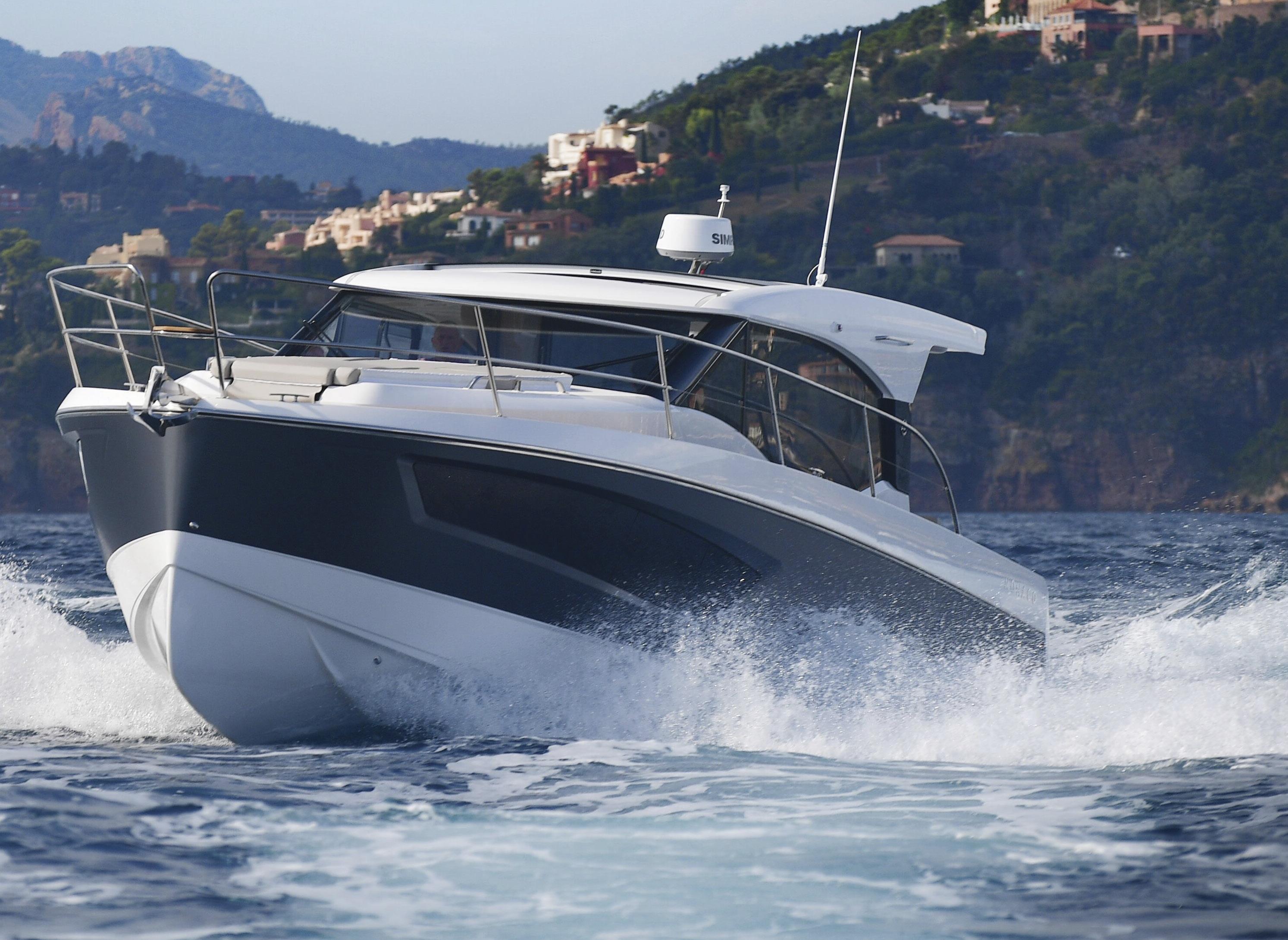
LOTS OF BOATS, INFLATABLES, AND TRAILERS IN STOCK















This

If you know, you know to arrive at Shark Spit on the full moon in August, ready to race. Running now for almost four decades, this unique regatta is in a league of its own. With no publicity surrounding the race, we were lucky to have been told about it one night while hanging out on the hook in Mansons Landing, a popular anchorage on Cortes Island. With a few glasses of wine sitting between our ears, all we picked up was that it was bound to be a good time. Organized by a community of ‘very boaty’ friends, there are actually two races that represent a long-held rivalry over ‘the best way’ to race. Hubert’s Race—the one ‘round Marina Is-
land’—is held the day before the full moon. Starting on the sands of Shark Spit with the ringing of a bell, captains swim/ row/paddle back to their boats, haul anchor and race around Marina Island in whichever direction they desire. The winner is the first to return to the beach and ring the bell. Not everyone agrees with this racing etiquette. Another race, held on the day of the full moon, is a more traditional affair. Sailors remain on their vessels for the duration of the race, tacking and gybing around buoys and back to the starting line. Arriving at Shark Spit a little late, the regatta was well underway with boats already gently puffing around the starting






































line. One air horn later, they were off and coming straight at us. Not being one to bail on a commitment to new friends, we threw up our canvas and joined the competition. It was a day of blue skies, warm sunshine and very light wind. So light that after the first hour we had only drifted a few metres away from the starting line. We were completely becalmed, holding out our headsail with a gaff to catch any wind we could. Suddenly we felt a gentle breeze and trimmed our sails so that we managed to reach a top speed of three knots, finally making it around the first buoy. We were racing now! Short lived, the wind died again, as it often does during the warm afternoons here in the Strait of Georgia. Six hours passed before we finally made it around the second buoy and back to Shark Spit. A riveting tortoise race. Following the fun, we dropped our hook and rowed to the spit for a humble ceremony where
each participant was given high praise as well as a trophy (whatever vintage nautical junk is lying around), recognizing their efforts and celebrating their commitment to the race. Racers stuck around after the awards sharing stories, laughs and food. Rumour has it a dolphin steak dinner was shared many August moons ago. A beautiful evening made even more so by a stunning celestial show—the rise of a big blood moon. This one-of-a-kind regatta is held annually on the full moon in August at Shark Spit on Marina Island. Excitement is already building for this year with the lunar calendar hosting not one, but two full moons. There are whispers that a rare and elusive bluemoon regatta will also be taking place.
If you’re in the area of Cortes Island and want to join in on the fun, be sure to ask around the anchorage—you’ll gather all the details you seek.
 —Allison and James youtube.com/c/allisonjames
—Allison and James youtube.com/c/allisonjames


The BC Boat Show is back and better than ever! The West Coast’s largest in-water boat show will be held from May 4 to 7 at Port Sidney Marina in Sidney. With thousands of visitors expected from across British Columbia, Alberta and Washington State, along with dozens of exhibitors, the seaside town of Sidney will be transformed for the weekend.
Visitors will be able to view more than 200 new and used watercraft, spanning from paddle boards, kayaks and inflatables, to boats and yachts of varying sizes, both power and sail. Professional brokerages will bring a large inventory of vessels to the show and will be available to welcome attendees aboard to tour the boats of their dreams.
In addition to the boats, the show will feature exhibits from marine-related businesses, offering products and services such as boat yard services, hardware, equipment, navigation electronics and boating apparel. This provides a unique opportunity for attendees to not only see the latest boats on the market but also explore a variety of products and services related to the boating lifestyle.
Boat show manager, Steven Threadkell, is excited about the prospect of another busy show:
“I’m really looking forward to this year’s show. There will be a large inventory of new and premium used boats for people to realize their dreams of life on the water. Be it big or small, power or sail, boating in BC is just magic. The experience stays with you forever.”
For visitors to the Island, the BC Boat Show is providing a free shuttle bus from the Swartz Bay ferry terminal and from the convenient free parking at the top of Beacon Avenue. Make a weekend of it and enjoy all that Sidney and the surrounding areas have to offer, including beautiful beaches, forest hikes, top-notch restaurants, shopping and many visitor attractions.
Stay informed at bcboatshow. com or on Facebook and Instagram @BCBoatShow.



Elevate your travel experience with breathtaking private charters and frequent daily flights connecting across B.C.’s coast and Seattle. Award-winning service, flexible fares, and unmatched frequency to the locations you love, flying with Harbour Air is simply the best way to travel the West Coast. Wherever you want to be, we can get you there.




The Maritime Museum of BC (MMBC) is busy negotiating a move to a Victoria Harbour location where it will be able to showcase its 35,000 marine-related objects and artifact collections to locals and tourists alike. The board is working with the Ministry of Transportation to obtain space in the Steam Terminal Building (the former CPR cruise building) with its classic architecture. Built in 1926, the Steamship Terminal will be the Inner Harbour location the museum has sought
to occupy for decades.
The MMBC has also received a grant of $17,000 from Canadian Heritage’s Museum Assistance Program to digitize its collection of 35,000 ships’ plans and 2,000 charts and maps, the items most frequently requested by the public, researchers, historians and model builders. The grant will fund the purchase of a large-format scanner, which can also scan blueprints, artistic products and full-size newspapers. For the modest fee of $50 to $100, the scans can be emailed or printed for customers.
MMBC has received another grant of $25,000 to complete the restoration of the Dorothy, the oldest extant wooden sailboat in Canada. Built by shipbuilder John J. Robinson in 1897, she’s had 11 owners before being acquired by the MMBC. The most recent restoration of the 30-foot sloop, with its four-cornered gaff-rigged mainsail, was performed by Tony Grove on Gabriola Island. Further revamping is now taking place at Ladysmith under the leadership of wooden boat guru Robert Lawson and other
craftspeople. Her relaunch will take place on May 27, when Ladysmith holds its annual maritime festival.


Finally, the museum has received a $1 million bequest from the estate of Cora Shaw. The donation will be held in the museum’s J.E. (Ted) Browne and Cora E. (Browne) Shaw Fund providing an endowment that will help operations, and the possible move and expansion plans.


Cora Shaw was a lifelong Victoria resident who died in 2022 at the age of 96. A UBC graduate, she was involved in community organizations, served as president of the University Women’s Club of Victoria and was a life member of the UVic Retirees Association. Her gift is the most substantial donation the museum has ever received.
—Marianne ScottSince 2017, the Canadian Government and several coastal First Nations have been working together to make a large ecologically unique ocean area, located about 150 kilometres off the west coast of Vancouver Island. The proposed region would become a Marine Protected Area (MPA). The collective working on the project includes the Minister of Fisheries, Oceans and the Canadian Coast Guard together with the Council of the Haida Nation, Nuu-chah-nulth Tribal Council, Pacheedaht First Nation and Quatsino First Nation.
The proposed Tang.Gwanḥačxwiqak-Tsigis MPA covers 133,019 square kilometres and contains more than 46 underwater mountains, known as seamounts, and all known hydrothermal vents in Canada. These deep-sea biological “hotspots” are globally rare and support deepwater species unique to the area.
The government and the First Nations reached an agreement in Febru-
ary that they would cooperatively manage the proposed new MPA. The area would receive strengthened marine protection as an MPA, which would expand prohibitions in the area to include activities that pose a risk to the protection of the unique seafloor features, including oil and gas activities, deep sea mining and other activities.
The new name for the proposed MPA consists of a Haida word meaning “deep ocean” (Tang.Gwan), a Nuuchah-nulth and Pacheedaht word meaning “deepest part of the ocean” (ḥačxwiqak) and a Quatsino word referring to a “monster of the deep” (Tsigis). It represents the strong connections and shared values between partner First Nations and recognizes their intimate connection to the marine environment.

The federal government said, “the establishment of this new MPA will contribute approximately 0.88 percent to Canada’s goal to conserve 25 percent of our ocean by 2025, making it the largest MPA off the Pacific West Coast in Canada.”
—Blaine WillickSidney, BC | 250-656-2639
INA MARINE Victoria, BC | 250-474-2448
INLET MARINE Port Moody, BC | 604-936-4602
LA MARINE Port Alberni, BC | 250-723-2522
LUND AUTO & OUTBOARD LTD. Lund, BC | 604-483-4612
MADEIRA MARINE 1980 LTD. Madeira Park, BC | 604-883-2266
M&P MERCURY SALES Burnaby, BC | 604-524-0311
MONTI’S MARINE & MOTOR SPORTS Duncan, BC | 250-748-4451
ROD’S POWER & MARINE LTD. Tofino, BC | 250-725-3735
SEA POWER MARINE CENTRE LTD. Sidney, BC | 250-656-4341
MERCURY 5.7L V10 350 AND 400HP
VECTOR YACHT SERVICES LTD.

Sidney, BC | 250-655-3222
V10 Verado outboards shift your expectations performance feels like. They come to power, propelling you forward to sensational smooth, quiet and refined, they deliver only Verado outboards can provide.
Mercury engines are made for exploring.
THERE ARE PLACES TO GO. THINGS TO DISCOVER. PEOPLE TO SPLASH.


expectations of what high-horsepower to life with impressively responsive sensational top speeds. Exceptionally deliver an unrivaled driving experience exploring. So are you. Go Boldly.
Days off are best spent with sandy feet and smiles as bright as the sun. Those are the days when life slows down. And your only job is making memories that nourish your soul.
MERCURY ENGINES ARE MADE FOR EXPLORING. SO ARE YOU. GO BOLDLY.

PORT BROWNING MARINA Resort
is excited to announce that the marina will be expanding. The marina will be adding approximately 800 linear feet of dock space. These docks will be brand new and include 30-amp and 50-amp power. This means an increase in annual moorage space and the ability to accommodate more transient boaters. It is great news for both the local long term moorage client as well as for rendezvous groups and overnight boating guests. The expansion will nicely complement the picturesque oceanside field area, camping, pool, pub and bistro that anyone who has visited the property has come to know and love.


“This expansion has been in the works for some time and is step two of about five steps we are planning
on. These added docks will allow us to offer more annual moorage while also offering an improved experience for our visiting boaters,” said Duane Shaw, President of Mill Bay Marine Group. “We have been making upgrades to the property every year and there will be more to come!”
The new docks at Port Browning are a fibreglass open mesh deck, and match perfectly to the docks that were previously replaced. “After significant research we still believe these are the most eco-friendly docks that we could install. The open mesh deck surface allows sunlight to shine through the dock to the ocean floor, which minimizes any negative effects of these docks,” said Shaw. For more information go to portbrowning.ca.
GORGE HARBOUR MARINE Resort
on Cortes Island recently announced that they are undergoing some largescale projects on their property in the coming year, and as a result some of their regularly provided services will be interrupted. Repairs and maintenance are being done on major systems such as, septic, water and electrical.
For 2023 they will be unable to offer RV accommodation and they are in the process of notifying clients who booked for the season. Pending approvals, a newly envisioned campground with full services will replace the existing sites as part of the larger project.
They will be closing their Floathouse Restaurant as after structural evaluations the building was found to be unsuitable for continued operation. There are no plans to rebuild the restaurant. They are currently working through solutions for food and beverage options to return on-site for 2024. At the marina, water will likely be available for moored guests, but will not be available as a service to boaters not moored at the marina for 2023. Boat gas and diesel will remain available. There will be a temporary shutdown of road gas as they install a new pump. Updates will be posted on their website.
The popular pool and hot tub will not be open for the 2023 season. They are working on repairs and the popular swimming spot should be reopened for 2024. On-site showers and bathrooms will be affected by the ongoing maintenance. thegorgeharbourmarina.com.
—Blaine Willick












Mill Bay Marine Group has launched a new membership based boat club called Club YOLO. Club YOLO is an easy and flexible way to get out on the ocean, making boating more affordable and convenient. Members will have the choice of booking three boat models—The Beneteau Antares 7, The Trophy T20CC and the Bayliner VR5. These boats provide variety from comfortable summer cruising to fishing / adventuring to year-round boating with an enclosed cabin. The boats will be located at Mill Bay Marina and Port Sidney Marina with great access to explore the Southern Gulf Islands.
manage, clean and service the boats and we outfit the boats with all navigation and safety equipment” states Duane Shaw, President of Mill Bay Marine Group. “All you need to do is show up and enjoy the boats!”
The new boat club has the potential to attract a wide range of customers. Many boaters are tired of boat ownership and all the hassles, many don’t have the time, money or storage for a boat and many are frustrated with the backlog of boat supply and waitlists for moorage.
“Welcome to worry-free boating. A club where members can trust that their boats will be looked after and they will receive an extremely high level of service,” said Shaw.
The ratio is eight members to one boat. With six boats available for 2023, there are only 48 spots available. To reserve a spot, Club YOLO requires a $200 deposit (fully refundable). The deposit secures the membership until the boats arrive. For more information go to clubyolo.ca.
There is a one-time membership fee and an affordable monthly payment. “The idea is, we do all the work— we purchase the boats, we pay the moorage fees, we pay insurance, we pay and arrange maintenance, we INDUSTRY
Yanmar Marine International recently revealed its new innovative electric sail drive technology at the Miami International Boat Show in February. The new electric sail drive comes as Yanmar continues its commitment to deliver sustainable propulsion solutions. For more information go to yanmar.com/marine.
The Greater Victoria Harbour Authority has appointed a new CEO. Robert Lewis-Manning takes over the role from Ian Robertson. Lewis-Manning has over 20 years of executive-level leadership, having previously worked as the president and CEO of the Chamber of Shipping.
ANCHOR MARINE
Victoria, BC 250-386-8375
COMAR ELECTRIC SERVICES LTD
Port Coquitlam, BC 604-941-7646
ELMAR MARINE ELECTRONICS
North Vancouver, BC 604-986-5582
GLOBAL MARINE EQUIPMENT
Richmond, BC 604-718-2722
MACKAY MARINE
Burnaby, BC 604-435-1455
PRIME YACHT SYSTEMS INC
Victoria, BC 250-896-2971
RADIO HOLLAND
Vancouver, BC 604-293-2900
REEDEL MARINE SERVICES
Parksville, BC 250-248-2555
ROTON INDUSTRIES
Vancouver, BC 604-688-2325
SEACOAST MARINE ELECTRONICS LTD
Vancouver, BC 604-323-0623
SEACOM MARINE LTD Campbell River, BC 250-286-3717
STRYKER ELECTRONICS
Port Hardy, BC 250-949-8022
WESTERN MARINE CO
Vancouver, BC 604-253-3322
ZULU ELECTRIC Richmond, BC 604-285-5466
























































































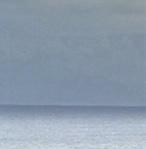

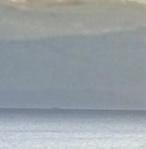

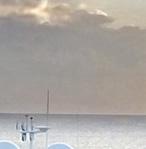

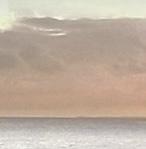

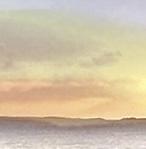












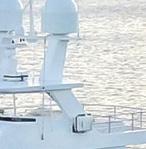

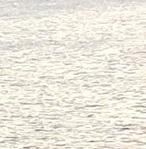






























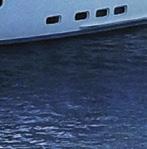




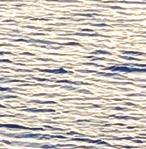


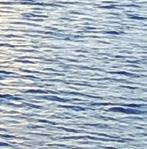





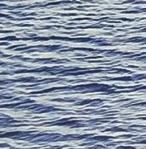



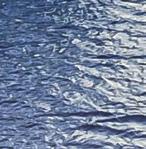



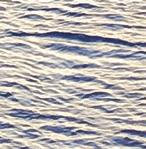





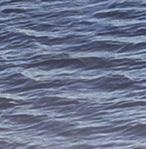
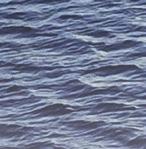




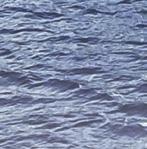




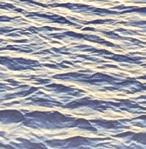




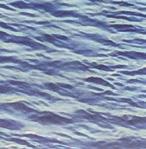



















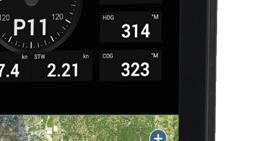










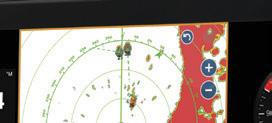
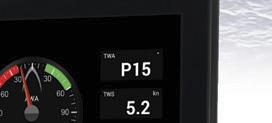
























Mbit off the left arm and part of the right hand of a tourist from France. Ouch! Three years ago, a man died following a shark attack only a hundred yards from our favourite spot.
Maui. Last December, a tiger shark killed an unwary snorkeller not far from where we like to swim. Three months earlier, not far away, a shark
Every April, we tie the boat firmly to the dock and trade muddy Pacific Northwest trails for golden sand beaches; English daisies and buttercups for plumeria and jasmine. I’ve always said that on Maui, the biggest decision I have to make is which swimsuit to wear.

This year, maybe that’s not quite
true. The real question is, am I going to put my snorkel and fins on and get in the water?
I will, of course. How could I not? The lure of the reef is too strong to ignore. For years, we have alternately kicked and drifted over yellow lobe coral, pink cauliflower, blue brain, grey and yellow finger coral and more, in all sizes and many whimsical shapes. And that is just the beginning. Hundreds of bright tropical fish, a few shy moray eels and the occasional turtle live, eat and rest in

GAS & DIESEL ENGINES
Rebuild kits
Gasket sets

Liners
GREAT PRICING ON -STARTERS -ALTERNATORS



-TRIM MOTORS

Water pumps
3 year warranty
Turbos
Filters
Mercury & Mercruiser factory parts


Tune-up items
Fuel systems
Water Pumps
Complete engines
Sterndrives
Props
Gasoline inboards
Diesel engines
Outboard engines

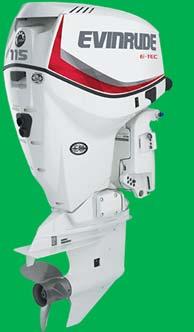
REPLACEMENTS FOR ALL BRANDS OF ROTATIONAL ELECTRIC MOTORS MOST IN STOCK








All BRP, Evinrude Johnson, & OMC Cobra parts

these structures. Nothing compares to the sights we see when we glide over the reef.
In the shallows, we find the ocean’s nursery. Fish the size of my thumb dart about, tiny, perfect copies of their elders who forage a little farther out. Brilliant yellow and black butterfly fish; black tangs with striking blue, orange and white stripes; parrot fish in mottled pink, purple and blue with parrot-beak noses; and too many more to mention. Big and little, parents and offspring alike depend on the reef for shelter, food and places to hide from predators. It is one of nature’s miracles.
Formed by tiny coral polyps that extract calcium carbonate out of ocean water and build on top of their parents’ and grandparents’ exoskeletons over billions of years, they’ve recorded natural history. Like trees, they grow rings each year, and since ancient times, they have been laying down the history of our solar system. In their own language, they confirm what astronomers believe: that infinitesimally slowly, but inexorably, our days are growing longer and the distance between the moon and our home planet is increasing.
We have to pay our annual visit to these minute scientists. But we will keep a wary eye out and stay near shore.
Safely back from the reef and warmed up by the sun, we will walk to the fish market where, at stainless steel tables behind the display case, white-aproned employees cut the morning catch. Moon fish, ahi, mahi mahi, swordfish and others we’ve yet to try are all delicious when seasoned simply and grilled until just done. I love to serve them with mango salad.
There are over 60 varieties of mangoes, each with a slightly different colour, flavour, size and texture, but only six are commonly available in grocery stores. Since they ripen at different times throughout the year, at least one should be available at any time. Nutritionally, they provide more than 20 vitamins and are an especially good source of vitamins C, A and B6, plus fibre and antioxidants. Although you can use mangoes whether ripe or not, this salad is better when the fruit is ripe. At this time of year, honey mangoes are plentiful, and when they are ripe, they are deep gold and the skin has small wrinkles. The problem is knowing when other varieties are ripe too. In general, colour is not a good indicator. Ripe mangoes feel slightly soft. Test by pressing the fruit lightly in your hand, as if you were checking an avocado. If it’s firm, let it continue to ripen at room temperature or, to speed up the process, enclose it in a paper bag. When it’s ready to use, it can be stored for a few days in the refrigerator.
In the past, I’ve avoided buying mangoes because I didn’t know how to cut and peel them without ending up in a sticky mess. But I’ve learned. Slice off one side close to the pit, then the other side, and you will have most of the fruit. Lay each side on a cutting board, skin side down, and with a sharp knife, cut strips or squares without cutting through the skin, then scoop the fruit out of the skin with a large spoon. Generally, one piece of fruit yields one cup or a little more of magical mango flavour.
This is making me hungry, and what could be better beside a simply grilled opakapaka than a mango salad?
Notes: Both the mango and avocado should give slightly when gently pressed. It’s not important to follow this recipe exactly. Use the amounts you have. Taste. Season. Serves 3 to 4.
•1 ripe mango (1 – 1.5 cups cubed)
•1 large ripe but firm avocado
•1 cup diced cucumber (peeled and seeded or English or Persian cucumber)
•1 orange, segmented, or 1 cup diced papaya or 1 cup pineapple cubes
•3 – 4 tablespoons thinly sliced or minced red onion
•1 – 2 tablespoons chopped cilantro
•1 tablespoon chopped mint
Optional:
•½ red bell pepper, diced or sliced
•1 small jalapeño, stemmed, seeded and minced
Dressing
•1 teaspoon grated ginger
•2 tablespoons freshly squeezed lime juice
•2 teaspoons extra-virgin olive oil
•¼ teaspoon Dijon mustard
•Pinch cayenne pepper
•¼ teaspoon salt or to taste
•1 teaspoon sugar or honey
Alternate Dressings
If you don’t have all the ingredients for the dressing above or are in a hurry, try the juice of half a lime with salt and a pinch of sugar to taste, or champagne vinegar with salt and a pinch of sugar to taste.
1. Cut everything to uniform pieces, except dice the cucumber.
2. Whisk dressing, then combine gently.
3. Taste. Correct seasonings.
4. Serve at once or chill for 30 minutes.







Before I bought my own sailboat, I had the next best thing: a boyfriend with a sailboat. It was early July, and his 27foot Albin Vega was anchored in False Creek. On hot summer evenings, he

Bwould drive us in the dinghy to Granville Island and pick up fresh pasta and vegetables at the market to bring back to the boat. Some nights, we would also pick up a couple of friends at the dock and enjoy some good company, along with the food and the sunset. As fun as it was to hang out on a boat in the city, we couldn’t wait to get away for an adventure.
We decided to head to De Courcy Island. It was only my second trip aboard the Albin Vega. On our first trip together, he had organized everything—
food, fuel, water—you name it. All I had to do was show up. On this second trip, I was eager to show him I could be a valuable member of the crew, so I offered to take care of provisions for the weekend.
I am not new to sailing, but I am new to cruising. My previous sailing experience was aboard the 210-foot Norwegian square rigger, STS Sørlandet. At 16, I left home to go to school and sail around the Atlantic. After my eight months as a trainee, I returned the following summer to volunteer, and was
“I’ve




later hired as cook’s mate. Throughout university, I worked in Sørlandet’s galley during their summer season, making coffee, baking bread, peeling potatoes, serving fish soup, pouring champagne and feeding up to 90 hungry crew. I certainly knew my way around a ship’s galley. How hard could it be to cook for two on a 27-foot sailboat? I thought it would be easy. I thought I was overqualified. As it turns out, I had no idea what I was doing.

A COUPLE WEEKS before our trip to De Courcy, another cruising couple had invited us for dinner aboard their Spencer 53—their full-time home. They cooked the most delicious pal-





ak paneer curry. We begged for the recipe, and they graciously obliged. I decided it was the perfect meal for our weekend sail. I bought bags of spinach, tomatoes, paneer and coconut milk. I premeasured the spices into little baggies and poured maple syrup into a squeeze tube. I packed eggs, bacon, cheese, parmesan, crackers, pasta and fresh Swiss chard from the garden. I felt prepared. We loaded everything into the boat and hit the water.
All was well aboard until the second night, anchored off De Courcy, when I climbed below to begin cooking palak paneer curry for our dinner.
“How do you plan on blending the spinach?” My boyfriend asked.
I looked up at him, eyes wide with panic. I hadn’t considered the possibility that I wouldn’t have access to everything I had in my kitchen at home. I was used to working in a galley with two industrial ovens, three multiuse cookers and a professional mixer, not to mention every imaginable cooking gadget. The Albin Vega certainly didn’t have a hand blender. How could I have thought otherwise? There were only two burners and a small icebox. Although I had cooked on board half a dozen times, I just hadn’t thought my meal plan through.
Luckily, I had stashed a can of instant red curry on board during a previous visit, in case of an emergency. Curry-in-



a-can was a trick I learned from my best friend’s mom—a long-time cruiser and foodie—who can whip up a delicious meal for six in the galley of her 30-foot Sea Ray in less than 20 minutes.


THE GREAT THING about this recipe is you can use whatever vegetables and protein you have. That night, I didn’t have much, but I threw in some garlic and Swiss chard, then added one can of curry and one can of coconut milk. On the other burner, I cooked the rice. The aromatic smells of the garlic and curry wafted up to deck and turned the envious heads of our anchored neighbours. Just like that, the evening was saved.
Ingredients:


•1 – 2 cloves of garlic
•1 shallot or white onion
•2 cups thinly sliced vegetables (zucchini, red pepper, carrots, bean sprouts and Swiss chard all work well)
•1 can Aroy-D Instant Red Curry


•1 can coconut milk
•1 cup brown or white rice
Optional: Add a protein such as prawns, cod, chicken or even deep-fried tofu.



Method:
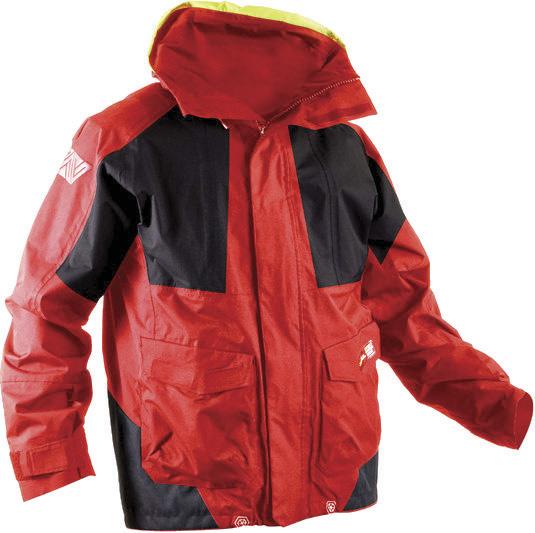
In olive oil and butter, sauté garlic and shallot or onion if you have it. When soft, add vegetables in order of cook time. When vegetables begin to get soft, add cooked protein. Then, add can of curry and can of coconut. Let simmer for five to 10 minutes. Stir occasionally. Serve on rice. Enjoy!


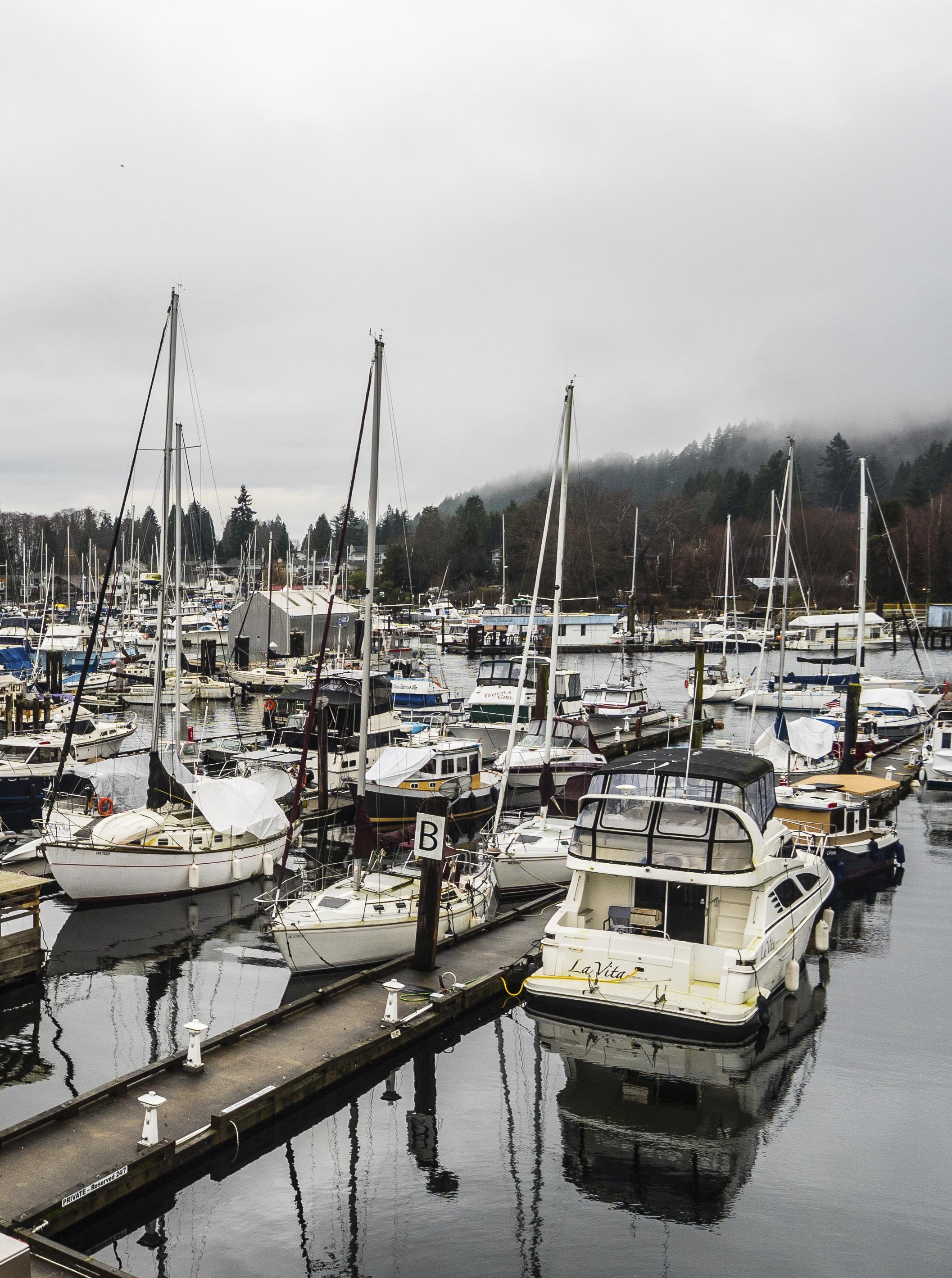
On a mild sunny day, there’s nothing better. The air is bewitchingly clear and everything has a sharp, bright focus. But all it takes is for the sun to scoot behind a cloud and suddenly I’m throwing on another layer or wishing for a fireplace. And if the wind picks up and a cold rain sets in, the only acceptable way to finish off the day is with a hot shower and a hotter drink.
This is why planning an early season getaway to Gibsons was such a great solution. There’s something special about being tied up to a dock (a ceramic heater keeping the air warm) with a misty Howe Sound view of the sea and snowcapped mountains just outside the porthole. If the weather’s good, there’s lots of outdoor exploring to be done (and maybe even a late season snowshoe trek at Dakota Ridge). If it’s cold and wet, there’s no lack of cool indoor spaces to visit. Instead of just another weekend of waiting for summer—a trip to Gibsons can end up feeling like a holiday and staycation rolled into one. Back in the day, Gibsons’ main claim to fame was that it was the setting for the TV classic, The Beachcombers. For many visitors this is where the picturesque town could have stayed stuck. Instead, the community of 4,600 has leaned into its natural outdoor charms; developing a range of forest trails and
seaside walks. Add in the region’s evergrowing list of breweries, cideries, distilleries, restaurants, art galleries and coffee shops and Gibsons has become a great destination for boaters and tourists alike.



Like much of the Sunshine Coast, once summer hits, Gibsons Landing can get really busy. This is equally true of the marinas. In peak season it can be tough to even get a slip at either of the two marinas. In the off season it’s a little easier—but you’ll still want to call ahead. Both Gibsons Landing Harbour Authority (GLHA) and Gibsons Marina offer transient slips and a range of amenities including showers, laundry and wifi. Both are also a short walk from restaurants and galleries, as well as from bus stops and car rentals.
For off-season adventures I like to save time getting out on the water by making provisioning part of the fun—and saving some of the shopping for when I arrive. With shorter hours of daylight than in the summer—I’m always aware of making it into harbour before dark (especially when I’ve never been to the marina before).
After travelling to Gibsons and
Planning an early spring sailing trip is one of those things I haven’t completely gotten the hang of yet.









settling into your slip for the night, one option is to have dinner aboard with fresh ingredients picked up from the Gibsons Public Market (it’s just across the parking lot from Gibsons Marina). The small public market has a veggie stand; a fish counter; a butcher/deli; a cheesemonger; a chocolatier and a bakery. Another option is to walk to one of the restaurants in lower Gibsons for dinner out and save shopping for the next day.

After starting the day with coffee and tasty baked goods from Beachcomber Coffee Co., it’s time to explore. The Sunshine Coast boasts one of the highest percentages of working artists anywhere in Canada—so the trick isn’t finding an artist to visit, it’s winnowing them down so you don’t run out of time. You can try a do-it-yourself art tour by looking for the purple banners that indicate local artists are onsite and welcoming visitors (there are plenty around Gibsons), but we had the chance to go a little further afield on a tour with Sunshine Coast Art Tours.
Owner Douglas Bevans says he saw a need on the coast for his tours when he realized many visitors don’t know where to start when it comes to choosing which galleries to explore. So, he headed out and visited with dozens of artists to get a sense of who was out there. Then he curated a selection of studios that give a sample of the range of talent in the area.
After picking us up in his van, Bevans brought us to meet several artists. My favourites included the Macgee Cloth Company, a textile company where blankets and throws are made on antique English shuttle looms. Watching artist Pamela Macgee run the extraordinarily complex machinery is mesmerizing, and the blankets she creates are destined to become family heirlooms. Another favourite was Coast Raven Design Studio,
where Indigenous artists Richard de la Mare and Artie George create traditional wood carvings and jewellery pieces while sharing their rich heritage. Bevan also offers a tour that includes breweries, wineries and distilleries. A stop at Bruinwood Estate Distillery in Robert’s Creek, where Jeff Barringer and Danise Lofstrom hand-produce tasty twists on craft gins and vodkas convinced me a visit to a few more producers was a must. Everything was delicious but I was partial to the Cherry Gin (perfect for a spritzer) and I picked up a bottle of the creamy and unique Advocaat for on board sipping.
One of the challenges of any boating destination is exploring beyond the immediate harbour. It’s easy to spend hours, or days, in just the core of Gibsons (there’s a small catch-and-release aquarium inside the public market that showcases local marine creatures, excellent locally owned shops including Fong’s Market & Gifts, vintage boutiques and thrift stores and even a brewery) but the more I saw, the more I wanted to do.
Fortunately, there are a few more options for getting around. The Coast Car Co-op has an agreement with other car co-ops in BC (Modo and Kootenay Carshare), so if you’re a member of one of those you have roaming privileges with Coast. There’s also a local car rental agency and BC Transit offers regular bus service that gets you within a short walk of Banditry Cider, Sunday Cider and Persephone Brewing Company.
The bus can also get you to Alpha Adventures in Roberts Creek. If you happen to visit the coast before locally run Dakota Ridge closes for the season (early to mid-April) you can catch an Alpha Adventures shuttle up to the ski and snowshoe area for a true sea to sky adventure. The snowshoe trails are well marked and the views from the ridge are gorgeous. And because most boats don’t have snow-
shoes in their lockers—they provide equipment rentals too.
THE KEY WITH early season trips is to be adaptable and to pick a destination with lots of choose-your-ownadventure options. That way it doesn’t matter if the sun stays firmly behind dark clouds that threaten a chilly rain. There’s a hot shower and a hot drink at the end of your sail as well as the reward of a new horizon. Adventure doesn’t have to be saved for the summer months—all it takes is a good plan.

Gibsons Landing Harbour Authority (GLHA)
The non-profit marina welcomes transient vessels for hourly or overnight moorage. 604-886-8017
glha@telus.net
Gibsons Marina
Offering fuel and hourly or overnight moorage for boats up to 85 feet. 604-886-8686
Bitter End Boater’s Exchange
1044 Seamount Way, Gibsons, BC
Purple Banner Art Tours
Developed by Coast Cultural Alliance—purple banners fly wherever artists are at work. coastculture.com/purplebanner-tour
Sunshine Coast Art Tours
Book an art of brewery tour and see more of the coast. sunshinecoastarttours.com
Alpha Adventures
Shuttle to Dakota Ridge and kayaking/ SUP tours. outdooradventurestore.ca
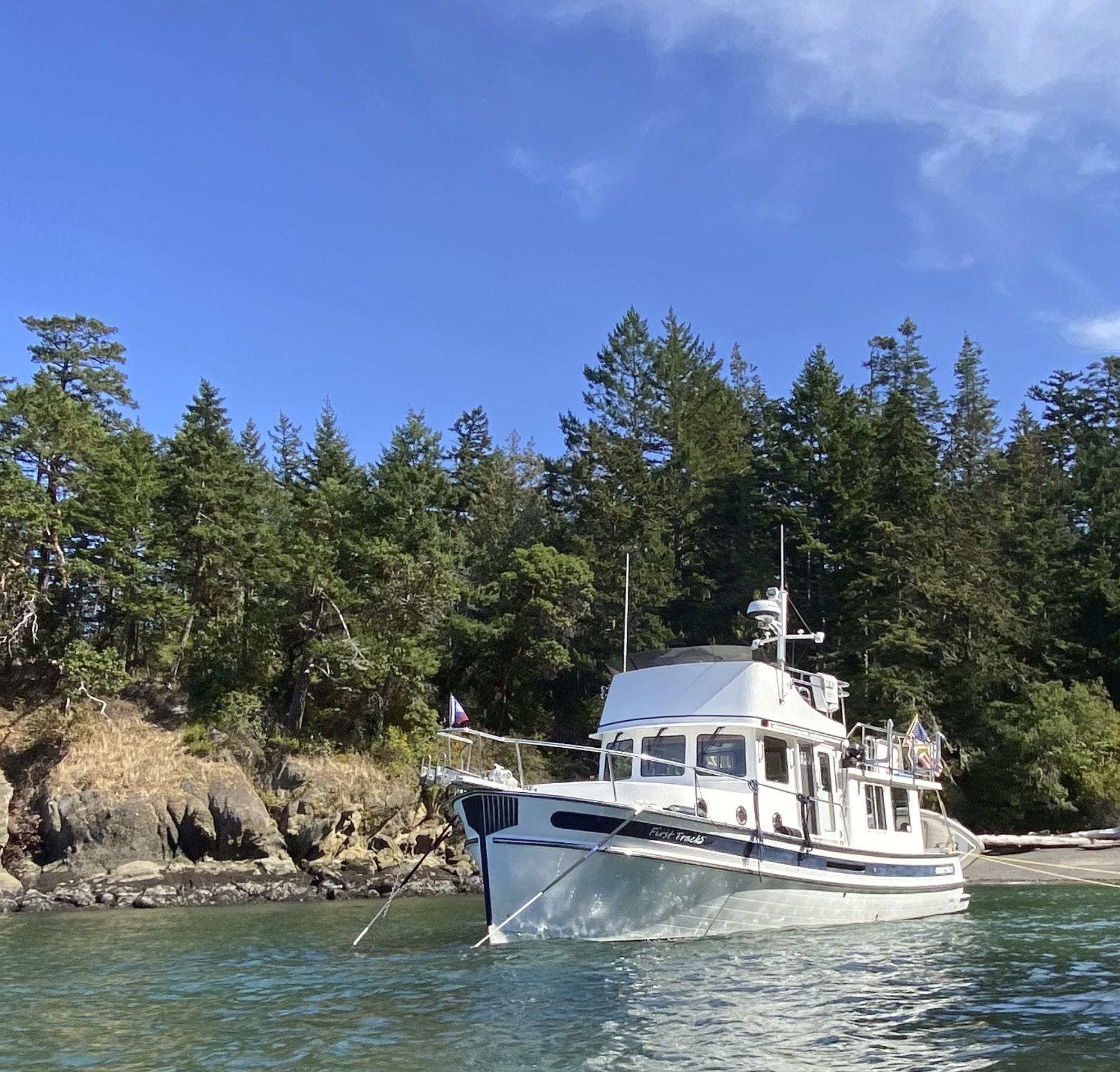
Lessons learned during “the longest night on anchor”
Story and Photos by Mark Leopold
IIt was a beautiful late summer day in the San Juans when my wife-and-first-mate Peggy and I noticed that tiny “Eagle Cove” was open and beckoning us. This is our name for a small, one-boat anchorage between Eagle Point and Rolfe Cove on Matia Island, and seeing it open is a rare and welcome sight. Light northwesterly breezes were coming in directly from our anchorage at Sucia Island, but with little fetch between us and Matia Island, calm seas prevailed. We pulled up anchor at Sucia in glassy-calm water and set a short course for Matia, just 1.6 miles away. This is a very tight anchorage, and I was mindful of the practical considerations for anchoring, with particular focus on the need to quickly deploy our stern-tie because of the proximity of rock formations along the northern shoreline that dry at low tide, and because of the sheer vertical rock cliff that forms the entire southern edge of the cove. These two factors, along with a seabed that shallows progressively toward shore, make for exceptionally limited swing room when anchored.

WE SECURED FIRST TRACKS, our Nordic Tug 37, and enjoyed an afternoon on the flybridge basking in warm sunshine with a very gentle breeze. The peaceful afternoon was spent catching up on reading, exploring tidal pools in the kayak and capturing photos of a stunningly picturesque sunset with unimpeded views northwest past

Sucia Island. Total bliss. After a relaxing barbecue dinner in the cockpit, we took in the placid mood as the sun dropped toward the horizon. As the evening wore on, our tranquility was disrupted by a growing breeze and building waves. The direction of the wind had shifted just slightly—but enough—that stiffer breezes were now coming in past Sucia from across the vast expanse of the Strait of Georgia and penetrating deep into the tight cove, causing us to bob up and down like a cork.
In hindsight, perhaps we should have pulled up anchor then, but with fading daylight and the anticipation of waking up to another day in our secluded paradise, I dismissed the warnings of increasing wave activity. We battened down the hatches, stowing everything we could, and hunkered down for some discomfort for an hour or two. Or three, or four, or six, or eight.
THUS BEGAN THE longest night we have ever spent on anchor in our three decades of boating. The closest comparison was on our previous vessel, a much smaller and lighter Ranger Tug 27, rollicking and rolling across Dixon Entrance, the notorious “gate” along the Inside Passage between Prince Rupert and Ketchikan. But this was different. It was now pitch black and our only movement was vertical rather than horizontal. At least in a crossing one is making headway and can anticipate the relief of a sheltered destination. But throughout this sojourn we could only wait as the uncomfortable minutes turned to anguished, tortured hours. Now, as the waves built into breakers, the bobbing sensation transformed into us being slammed and shuddered as our bow lifted and hurled back against the sea. Peggy and I, lying in the forward queen berth, were tossed up and down like rag dolls. Closing our eyes to catch badly needed sleep
was not even a possibility; instead, we maintained a vigil throughout the night. Prayers were repeated.
The sense of helplessness enveloped us like a cocoon. I would crawl out of bed hourly to check our position. The rocky bluffs on either side of First Tracks were close enough that, using our searchlight, I could see them to verify our unchanged position. The good news was we had not dragged at all. The bad news was that the ominous rock wall to port, and the drying rocks to starboard were so perilously close that I could see them with the searchlight.
RANGER TUG OWNERS considering a journey up the Inside Passage would commonly ask us: “How rough of water can the vessel take?” The answer was comforting: “Typically, more than the crew!” I would contemplate this throughout the long night, somewhat reassured by the fact that our boat was not only four times the displacement of our smaller tug, but unlike a traditional production vessel, ours was custom-built, earning a superb reputation for build quality. I knew this firsthand from having updated all electronics three years prior, necessitating the removal of various internal panels to access wire runs throughout the vessel and visually inspecting how these boats are put together. Surely, the build quality would hold up, wouldn’t it?
Thankfully, it did. Aside from those hourly position checks and worrying which component of our vessel might fail first, my thoughts turned to our departure at first light. With the wind and waves unrelenting, we did not want to contemplate another day or more of this punishment. But escape would be a complex process, given we had three tasks to complete quickly and nearly simultaneously:
1. Remove the anchor bridle (possibly having to hang over the heaving bow pulpit to release the bridle hook
from the chain, and then remove the full length of the bridle lines from two cleats).
2. Winch up the chain, which would also release the anchor from the seabed.
3. Undo the stern-tie line.
WE NEEDED A PLAN: this would require coordination between captain and first mate sequentially. As the sun finally brought first light, and with sea conditions unchanged, we commenced our well-rehearsed strat-

egy. With life jackets and headsets on, it was time to take our stations. The Cummins QSB 5.9 diesel engine rumbled to life and was brought up to operating temperature. Both bow and stern thrusters were turned on and tested—just in case—although it was unlikely they would offset the forces of the pounding waves. Peggy bravely stepped into the rocking cockpit, ready to release the stern-tie line at my command. Despite our sleepless night, there was no need for caffeine: we were both wide awake.
With the bridle lines attached well below the sea’s surface, I first had to work the windlass to retrieve some of the chain to expose the bridle hook. Tightly gripping the stainless-steel bow rail, the bridle hook was freed and the loop ends removed from the cleats. The wind now pushed First Tracks forcefully back against the anchor, and I raced back to the lower helm to throttle forward, relaxing the tension on the anchor chain as I began to retrieve the anchor rode that had held fast all night long.
I gave my trusty first mate the command to release the stern-tie. Now, every second counted as our vessel would no longer be secured directionally, so keeping from being pushed broadside to the incoming rollers was critical. But the continued onslaught of waves and breakers pushed First Tracks to port. We angled closer to the sheer rock wall, now just seven metres away, threatening our escape. Released from the seabed, I throttled forward, determined to point First Tracks directly into the teeth of the wind and waves, steering her toward

starboard and away from that dark wall of danger.
Then, Peggy screamed through the headset that the stern-tie was tangled on a log and would not come loose. “It’s stuck, I can’t pull it free!” she yelled. We were released from the bow, but not yet from the stern, while creeping ever closer to the hideous black “iceberg” to port.
At that moment, it was an easy choice: “380 horsepower will drive us through these breaking waves to escape the menacing rock wall to port; if we snap the nine-millimetre stern line in half so be it!” Thrusting the throttle forward, the dependable Cummins responded, the propeller dug in hard against the sea, and our 13 tons crashed through the waves, leaving the once-idyllic cove behind. Jailbreak!
Peggy exclaimed that the stern-tie was freed. As we exited the frothing, churning, angry cove, we quickly rounded the western-most tip of Matia Island and within seconds had escaped into protected, placid, peaceful seas. Freedom.
Peggy and I challenge ourselves to find new locations on most outings; and also, to glean new lessons from those experiences. So now from the comfort of my recliner, it is time for some self-reflection. Precisely what did we learn from our “longest night on anchor?”
Consider Fetch: Concern about wind is not limited to strength and direction; but also fetch, defined as the distance along open water or land over which the wind blows, or the distance traversed by waves without obstruction. Just a moderate shift in wind direction negated the protection afforded by Sucia Island, extended the long fetch from the Strait of Georgia and allowed the
waves to build ominously. Peggy swears these were at least three to four-metre waves (they were less than half that), but with First Tracks effectively a “sitting duck,” those waves felt enormous!
Act Quickly: By the time I recognized the wind shift, and consequently the threat due to fetch, our window of daylight had diminished. I should have pulled anchor sooner (before dinner) and sought a more protected anchorage—before it was too late.

Choice of Anchor: We’ve used a variety of anchor types over the years but have grown most confident with the performance of the Delta-style anchor. We anchor out a lot, and on the Nordic Tug, our anchor roller and bow pulpit can accommodate a much larger size than our previous boat, so we “super-sized” it, going with a massive 30-kilogram anchor that is double the size of the suggested “minimum” for our boat. As long as the bow pulpit, roller and windlass can handle the size and weight, the
larger size (normally) allows us a better night’s sleep.
Anchor Bridle: I use and highly recommend a pre-assembled rigging from Mantus Anchors, but you can also assemble your own. However, there seems to be a lot of confusion about the purpose of the bridle/snubber that is reflected in the many iterations of homemade set-ups that are commonly seen in anchorages today.
Stern-Tie: We use bright yellow polypropylene line that floats and is highly visible, with sufficient length (180 metres) to allow running from the boat to shore and back, even in difficult anchorages. Had we tied off at shore instead of doubling back to the vessel, we could not have departed until the wind and waves calmed to allow safe launching of our dinghy, which would have extended the punishment and risk to both vessel and crew. However, we should have placed a serrated knife near the cockpit in case the line needed to be cut.
Seminars: May 16-20 may 18-20
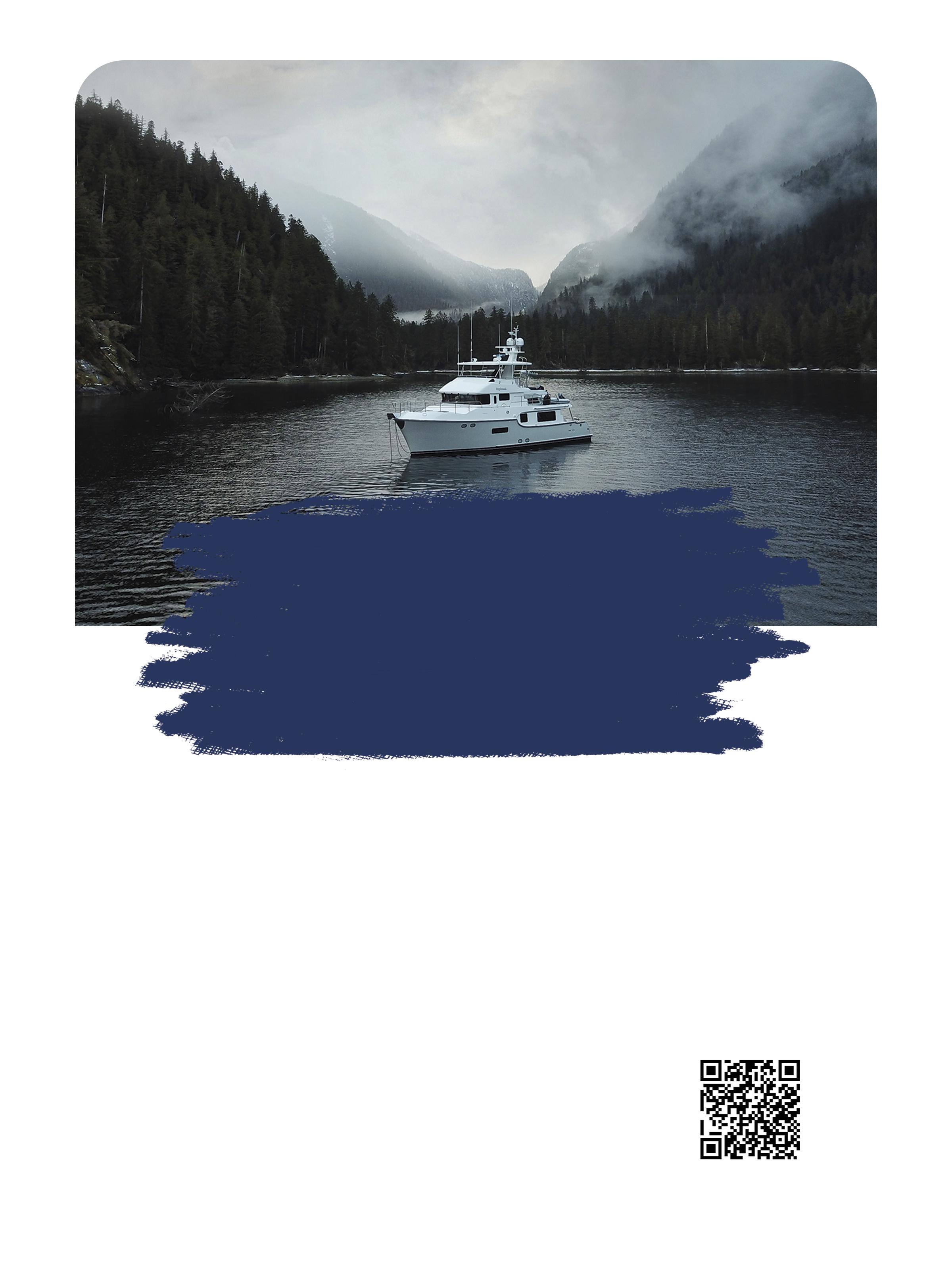
2023
CAP SAnte marina Anacortes, wa

The double bridle line setup connects the anchor chain to the boat in two places which halves the shock loads.

A single line snubber setup connects the anchor chain to the boat in only one place. The short snubber has limited shock absorbing ability and places higher stress on the single attachment point.






Bridles (two lines) and snubbers (single line) serve a similar purpose. They provide a direct link between the chain rode and a strong connecting point on the vessel, while bypassing the windlass. They act like a shock absorber to mitigate shock loads caused by waves and wind which could dislodge the anchor. They also protect deck cleats from shock loads. Unfortunately, many boaters use a relatively short line or improper cordage that lacks sufficient stretch, rather than a genuine anchor bridle or snubber. Our bridle, properly deployed, was very likely the differencemaker in First Tracks staying put that long night vs. dragging anchor or damaging the windlass or other deck hardware. The overall length (exceeding eight metres) of heavy three-strand nylon line provides significant stretch to fulfill its primary mission as a shock absorber. Yes, a shorter line may “snub” the chain from rubbing on the bow roller but lacks sufficient stretch, which is the key to increasing holding power and the primary reason to use an anchor bridle. Properly connected with a bridle, the more rigid chain rode will have ample slack as the tension against the bridle is taking the primary impact of wind and waves, vastly increasing the anchor’s capacity to remain embedded in the seabed— exactly as we experienced.





8 superstitions to boat by
 By Desiree Miller
ILLUSTRATIONS BY MIKE MOCKFORD
By Desiree Miller
ILLUSTRATIONS BY MIKE MOCKFORD
TThe first time I was invited on a sailboat, there were a few rules to abide by: have a lifejacket, wear closed toe, non-marking shoes, and under no circumstance was I to bring a banana on board. The captain was not a picky eater, rather, he followed a set of ancient boating superstitions that still hold power over boaters today.
Why the superstitions? The origins of these beliefs stem from the early days of sea travel when sailors ventured into uncharted waters for fishing, trading and exploration. At a time when scientific explanations for the various dangers and phenomena were unknown, these mariners put faith in the greater powers to help guide their safe passage. Believing in superstitions was a way to have a sense of control, when so many important parts of their life were unpredictable and dangerous. With technology, experience and documentation, boating today is a much more understood and safe adventure. However, since these beliefs seemed to work for centuries, many boaters don’t want to mess with a good thing. Over the years, these myths and superstitions have continued to grow and some of the true origins have been
lost to time. But it’s still fun to speculate on how these things become accepted. Here’s a look at some classic, and odd, superstitions to boat by.
This first superstition is perhaps the silliest, but also has an explanation based in reality. Dating back to the 1700s, on trade routes between Spain and the Caribbean, spiders and snakes would often hide in crates of bananas.
Since both can cause harmful and deadly bites, the fear was that having crates of bananas on board put the crew members at risk.
This troublesome fruit was also notorious for spoiling cargo during fruit trades. Before it was widely understood that bananas release ethylene, which speeds up the ripening process, bananas were responsible for rotting other fruits on board, and jeopardizing the ship’s cargo.
Fishermen on board also had a
MAY 27–28 , 2023
swiftsure.org #Swiftsure
• Four Long Courses for Monohulls and Multihulls
• Inshore Courses for Flying Sails and Cruising


REGISTRATION DEADLINE
• Swiftsure Long Course Races & Inshore Classic Races: TuesdayMay23rd at www.swiftsure.org/registration
problem with this fruit. The theory goes, that since bananas decayed so quickly, ships carrying bananas had to travel quickly to make sure they wouldn’t spoil before reaching port. At this increased rate of speed, those wanting to troll for fish did not have the time or opportunity to catch anything. There is another theory that ethylene also repels fish. Therefore, bananas on the boat came to mean no fish.
It could all be folklore, but when former Pacific Yachting editor Dale Miller, and sales executive Tyrone Stelzenmuller did their first Vic-Maui race, they found themselves in open seas with zero wind. A crossing that averages two weeks left the crew at sea for 21 days. After nearly running out of food and water, they had to make the challenging decision to abandon the race. Right around the time when that decision was made, they found a bag of trail mix containing dried banana slices. Coincidence?
to ensure safe passage. If by chance the left foot was used first, the immediate response was to throw the person’s shoes overboard in an attempt to undo this bad omen. These days, left-handed people aren’t shunned by society, but the next time you’re stepping on a boat, think about which foot goes first. Because why risk it?
make it difficult for a captain and crew to do business—if the name was unrecognizable.
If a boat needs to be renamed, there are critical steps to take in the de- and renaming process. These steps include removing any traces of the boat’s old name, including logbooks, paperwork and the name on the hull. A ceremony must be performed as well—like the classic ritual of writing the original name on a piece of paper, folding it, putting it in a box and burning it. The ashes are then tossed into an outgoing tide. An offering to Poseidon is also expected, lest he should take offense to the boat’s new name. Once all traces of the boat’s former name are destroyed, the boat can be christened with a new name.


The name of the boat is both spiritual and practical. Once a boat is named, it has been recorded in Poseidon’s “Ledger of the Deep,” which keeps track of boat names travelling the sea and ensures that no harm comes to boats that are listed. To change a boat’s name, means you’re trying to trick the sea gods, which everyone knows is a very bad idea. From a practical point of view, trade ships relied on their reputations at the various ports of call, and to change the name of the boat could
You know how to whistle don’t you? Well, according to mariners, it’s best you don’t. Whistling on a boat is considered to be a challenge to the wind gods and it will stir up the wind, get it moving and cause bad weather and rough seas. The same could be said of singing and clapping, which are said to be able to trigger a thunderstorm. However, for sailors who happen to be stuck in windless waters, whistling could be used to their benefit, to bring on the wind and get the boat moving. This superstition, unfortunately, did not turn out to be true for the fateful crew on the aforementioned Vic-Maui race.
The well-known phrase “get off on the right foot” stems from ancient belief that the left side of the body is cursed. In Latin, the word sinister, means “on the left side” and thus during the Middle Ages with predominantly righthanded populations, certain religions associated left with evil. Sailors put a lot of faith in superstitions to guide them, so when getting on to a boat, one was to step with the right foot first

Cats have been a welcomed crew member since the early days of sailing. Trading, exploration and naval ships all made sure to have a ship’s cat to control the rat population on board. Rats were notorious for gnawing on ropes and wood, stealing food and, later, chewing on wires. Most importantly, they would spread disease to the food and people on the boat. The cat’s role was to hunt, catch and eliminate these rodents.
With long travel routes, cats were also a source of comfort to the sailors. Rumour has it, if a cat approaches you, it brings good luck. On the contrary, if it turns away, it brings bad luck. So even though rats on board aren’t much of a problem for cruisers these days, it is still in your best interests to make sure the ship’s cat is well fed and treated with respect.

This iconic rhyme has been a trusted weather forecaster more than 2,000 years. Cited in the New Testament, the trusted phrase was “established wisdom that prevailed among the Jews of the First century AD by Jesus in Matthew 16:2-3.”
The theory goes, if the sky is red at sunset, high pressure and stable air





are approaching from the west. This is a good indicator of calm waters and smooth sailing. At dawn, red indicates approaching rain, and possibly stormy seas. Superstition or scientific fact, this has long been a tell-tale for sailors planning their voyages.

GET
Tattoos are not just for aesthetics; they are said to bring good omens. With sailors being a superstitious bunch, it makes sense that they believe in the power of symbols. Enter the tattoo. This body armour was
an approach to attract luck and repel misfortune. Classic nautical art like the compass rose, anchor and nautical star are powerful symbols, said to guide the sailor home safely. Other art was to repel bad luck. Some quirky tattoos were roosters





and pigs on the feet to prevent the sailor from drowning. In early times, many seamen were unable to swim and they believed gods would have mercy on them during a shipwreck if they saw the images of animals on their feet. Why roosters? This superstition may have started from stories of shipwrecks, where lighter livestock often survived because their crates would float on the ocean. In the days of long, slow ocean passages, tattoos were also a way to pass the time. (No tattoos were applied during the aforementioned Vic-Maui.)
Boats are commonly referred to as a she, but why? A straightforward rea-




son could be the Latin word navis is feminine. However, the more exotic, exciting and romantic explanation is that boats were traditionally dedicated to goddesses or captain’s wives who were believed to protect the ship from danger. “She” naturally evolved
as a lasting legacy and as a protector from the dangers of the sea. This is ironic since women were banned on boats for ages. These days, boats are named after all sorts of things, but the tradition of referring to them as “she” lives on.

Joysticks are now available for most boats, including those with single engines, but the devil is in the details
 BY PETER A. ROBSON
BY PETER A. ROBSON
For most people, docking is the most stressful part of boating. However, these days, joystick steering has made it much easier to dock like a pro. Because of their ease of use, joysticks have also brought a number of new boaters into the sport, increased boat sales—and saved a lot of marriages.

As most readers know, joysticks allow a vessel’s controls, which may include throttles, shift controls, thrusters and steering, to be controlled by a single control head that allows precise manoeuvring in any direction.
Shepard McKenney of Hinckley Yachts introduced a joystick solution in 1988, however, it was exclusively for its waterjet boats. In 2006, Volvo Penta
was the first to offer a commercially available turnkey joystick solution to the mass market. It was soon adopted by many of the leading boat brands across the globe.
FIn 2008, Cummins-MerCruiser came out with their version of pod drives: Zeus. Soon after, joysticks were being developed for single and multiple outboards, shaft drive vessels and most recently, for sailboats, jet boats and wake boats. Today, almost any type of vessel with any configuration of propulsion, can be controlled by a joystick. Nearly all are installed at the boat builder level, though some can be retrofitted.
SeaStar Solutions (Dometic) was the first company to offer joystick steering for outboards with their Optimus 360 system introduced in 2012. Initially, it was offered for mechanically controlled shift and throttle, and later for electronically controlled engines.
Mercury now offers joystick piloting for single-engine pontoon boats, utilizing the outboard and deployable thrusters at the bow and stern. They have also integrated thrusters into their existing joystick control system. The system uses “closed loop yaw” logic which cancels out yaw when joysticking, eliminating the need for the user to have to twist the joystick to maintain heading due to wind or waves
Volvo has released a joystick docking system for single diesel Aquamatic
sterndrive installations. It integrates steering, bow thruster, gear and engine speed into a single joystick control. The company is the first in the industry to integrate steering of a diesel sterndrive with the control of the bow thruster on a single engine installation.
Yacht Controller and Dockmate both offer wireless handheld remotes that can be added to almost any existing vessel with any make of equipment.
Glendinning’s ProPilot joysticks and Yacht Controller’s fixed joystick can also be installed with almost any make of engine, transmission or thruster (including a model for single engine vessels). The same goes for Italy’s Xenta.
Companies such as Glendinning, ComfoDrive and Xenta offer joystick steering for sailboats though none are seeing widespread use. Most sailboat owners simply use their single engine and a bow thruster. ZF, however, has a unique steerable (360 degrees) sailboat pod drive that mates with small diesel engines and a bow thruster. Beneteau offers this system on two of their larger sailboat models under the Dock & Go label.
Installation at the boat builder level is easiest with fully electronic systems (helm and engines/transmissions). Then it’s just a matter of plugging it all in. Volvo Penta offers the most comprehensive system, supplying complete packages from the props, transmissions, engines, controls, joystick, autopilot, glass cockpit and all the harnesses as a single part number.
Things get a bit more complicated when it comes to older vessels with mechanical (i.e. cable or hydraulic) controls between the helm and the engines. Yacht Controller offers a system called Yacht Controller Mechanically
Actuated Systems (YAMAS) that ties a fixed or wireless remote joystick to fully mechanical controls between the helm and the engine. They do this by installing an electronically controlled actuator box. In other cases, Yacht Controller and other companies such as Glendinning and ZF can replace an older vessel’s mechanical controls at the helm with electronic controls. Then, an electronic actuator in the engine room operates short stub cables from there to the engines.
At the heart of any joystick system is a network that pieces together the component hardware and software. The challenge is to write algorithms that accurately configure thrust vectors for specific boat brands, so that when the joystick is turned, the boat actually goes in that direction. In addition, the software must be configured for each model and horsepower of engine, transmission and thruster (when fitted) that will be using that particular joystick.
Joystick technology is never really plug and play. For best performance, software parameters must be customized for each vessel. ZF’s process is typical, says Keith Stanley, ZF Marine’s pleasure craft product line manager. “After installing a joystick system on a vessel, our application engineers execute a series of steps to fine-tune performance at the time of commissioning. They optimize the software parameters based on vessel characteristics, typical sea conditions and captain preference. The application engineers responsible for commissioning joystick systems typically have hundreds if not thousands of parameters they can use to fine tune the performance. This tuning process is particularly important for station keeping, which is typically a balance between smooth engagement
and system authority to ensure optimal performance even in elevated sea conditions.”
Manufacturers of wireless handheld remotes (Yacht Controller and Dockmate) have an additional issue to deal with: communications between the remote transmitter and the onboard receiver that control the joystick. Obviously, if that radio link is broken, then the remote will not function. Yacht Controller and Dockmate avoid interruptions through different protocols. Redundancy is key. For example, Yacht Controller’s Maximo and Supremo offer added redundancy and range with over 100 channel combinations via digital dual band radio frequencies. Both Yacht Controller and Dockmate have alarms to alert the user should communications be lost.
One of the attractions of joystick systems is their ability to hold a vessel in position regardless of wind and current. Of course, this requires the system to be interfaced with an autopilot, in most cases two GPS sensors or a combination of GPS/IMU (Inertial Measurement Units) and some form of display. That function is variously called Station Keeping, Dynamic Positioning, Virtual Anchor, Skyhook and so on. In addition to position holding, other standard features include the ability to hold the vessel in position on a certain compass heading and the ability to maintain a specific heading without holding position.
Some joystick manufacturers offer their own branded autopilots (and displays) as part of their options package while others need to be interfaced with third-party autopilots and their
displays. Glendinning’s ProPosition system is different in that it doesn’t require use of an autopilot and only needs a single GPS position sensor to hold a vessel in position.
Joystick functionality is increasing every year. One company ahead of the curve is Yamaha. They offer several unique modes. Spiral allows operators to circle out in ever-expanding spirals around a fixed point (for fishers trying to pinpoint hot spots). Zig Zag works well for covering ground when trolling. Drift Point Track allows the vessel to follow a predetermined GPS track while maintaining a specific compass heading (good for drift fishers). Waypoint Arrival is another handy feature. When approaching your final waypoint, you can either have the boat do nothing and continue on its way, or you can have it automatically decelerate as it approaches the final waypoint. Upon arrival, it will prompt the operator to shift to neutral, at which time the system automatically enters into one of three preprogrammed modes. Lateral Assist, a recent addition, is designed to better compensate automatically for wind and current to help maintain heading and direction when moving laterally in joystick mode. Also new are Williamson Turn (to bring the vessel back to a point previously passed) and Pattern Search features.


As David Meeler, Yamaha’s new product integration manager put it: “All of these functions are part of the Helm Master EX system, for single to quad outboards, which includes its own dedicated GPS and heading sensors.”


ZF offers what it calls Controlled Drift, which maintains heading but applies a braking function to control the speed of the drift.

For single or multiple engine shaft drive vessels to achieve full joystick functionality, they require either a single bow thruster or a combination of bow and stern thrusters. These are generally third-party thrusters, either proportional (hydraulic, electric or retractable), or in some cases, single speed electric thrusters. The important issue here is that the thruster(s) have sufficient power to do the job. An underpowered thruster will likely mean that the system will lag in sideways operations and/or struggle against wind and current.
The issue with electric thrusters is their operational time is limited by the motor’s thermal capacity. Simply put, once they overheat, they shut down. This is more the case with single-speed electric thrusters as they are either off or full-on. Thermal shutdown is less of a concern with proportional thrusters as they are not always working at full speed, just what’s required at the moment. Fortunately, joysticks are typically only used when leaving or approaching a dock, so most don’t get heavy use for extended periods of
time—except when operating in the various station-keeping modes. While hydraulic thrusters are all proportional, the downside is that hydraulic lines need to be run throughout the vessel.
Recent innovations in fully electric steering (at the engine) have brought a range of advantages to boat builders and boaters alike. With outboard powered vessels, pod drives, stern drives (and some jet and surface piercing drives), being able to steer the drive motors is integral to the joystick function. The rudders on shaft drive vessels are usually not tied to the joystick (Volvo Penta is the only exception I could find).

In the past, hydraulic cylinders were the standard method of steering these vessels. Today though, electric steering is becoming the norm and has many advantages. Most notably, they eliminate the need for hydraulic fluid, hoses and pumps.
Dometic’s Optimus Electric Steering Actuator uses inverted planetary roller screw technology to control the move-
ment of the steering cylinder. According to Brian Dudra, vice president/ general manager of Dometic Vancouver, roller screws have several significant advantages. “Due to an increased number of contact points, roller screws have two to three times the dynamic load capacity as well as a higher tolerance to shock loads. The nature of this design results in increased durability and repeatability.” Dometic’s steering actuator is an integrated unit that mounts on most common outboard engines used today.
Fully integrated electric or bolt-on steering is available for several Yamaha outboards. One of the benefits of electric steering, according to Yamaha’s David Meeler, is that electric steering only draws battery power when the unit is actually steering. “When a boater is fishing and has the motor idling, that means more amps for other systems on the boat instead of the six to 10 amps that the hydraulic pump constantly draws.” Installation is also quicker as it only requires a connection to the starter battery and then a single wire that runs from the helm to the engine.
Other benefits include quicker and more accurate steering; adjustable lock-to-lock steering (for example, at slow speeds lock-to-lock might be four turns while at speed it might be eight turns because you don’t want overly sensitive steering at high speeds); and, steering friction can also be altered as needed, depending on conditions.




So, what will be the next big thing for joysticks? Well, it might be autonomous docking systems.
In 2021, Volvo Penta introduced what it calls Assisted Docking for its IPS pod drives. The award-winning system won’t dock the boat, but it will automatically compensate for tide, wind and current when approaching a dock. It incorporates a humanmachine interface said to provide a smoother docking experience.
Mercury is also continuing to pursue that avenue. They recently demonstrated an advanced autonomous boat. Rob Hackbarth is Mercury’s category director for controls and rigging. He explained, “The prototype vessel was capable of autonomously sensing and avoiding in-water obstacles during operation, then docking without the need for on-shore or on-dock sensors. The concept vessel addresses docking and navigating congested marinas, two high-stress aspects of boating.”
IN THE END, all the companies we talked to stressed that the goal of joysticks is to bring more people into boating that might not otherwise be there. Joysticks make it so much easier to overcome the fear of docking, especially as the systems work so well. That ease of operation has led to more and more people getting into boating. As Dometic’s Brian Dudra noted, “Delivering a fun, stress-free experience will be key to keeping [people] in our sport long-term.”


Lifelines, halyards, clutches and other efficient, new equipment. Check out the many advances in safety gear in stock. We replace old rigging and repaint masts efficiently. Home of the ‘Shoreline Reel’







Racing in breeze is much more than just adjusting the sails differently. I would suggest there are a variety of shifts in mindset and approach that will help you and your crew get around the course quickly, safely and more confi-


Rdently. Let’s take a look at the “breeze on” puzzle and see if we can identify some of those better practices. Checking the forecast the night before any race is something every racer is familiar with. Let me begin by asking a simple question: When you see a prediction of 20 to 25 knots, how does it make you feel? Excited, stoked, anxious, concerned, apprehensive—these are a few of the words that come to mind. Many racers will have competed in this much wind, and I would dare say that this gamut of emotional responses would be shared by most. The next question I would have for you is: How
BY ALEX FOX Jan Andersondo you prepare yourself to compete in these conditions? For me, it always begins with thinking about the particular boat I’ll be racing on. If familiar, I’ll be thinking about our previous races in big breeze. How did we handle things as a crew, what were our successes and what were the things we could have done better? Revisit those good lessons, in terms of boat setup, crew mechanics, boat handling. What were they? Positive visualization is a tool I use often. Imagine the sails set up nice and flat, the crew hiking hard and running through the perfect tack. Picture the correct rate of turn, then feathering through the
big puffs upwind, powering up in the lulls. Downwind, I see the boat under control and stable, with the crew well positioned, trimmers and helm working together, focussed on sailing fast and with confidence.
Now the flip side, dealing with the anxiety, concern and apprehension. I would call these feelings quite normal. The task then becomes how to benefit from this heightened emotional state? Knowing the challenges and the potential perils of being on a sailboat in big wind and rough water, that’s the starting point. Acknowledge that this is something to take seriously, then take scary thoughts and redirect them toward a safe and successful outcome. Losing control, rounding up, broaching, gear failure, sail damage, or even more extreme, losing a person overboard are
real concerns. Touch wood—I’m only a little superstitious. Talk about the different scenarios, run through the possible handling and solutions for the best possible outcome in each situation. This would rank very high on my list of best crew practices, and this type of collective preparedness and forethought will help any sailor file away the negative thoughts to a standby part of the brain where they won’t manifest into debilitating anxiety or crippling fear.
WHAT ARE SOME of the other good practices in heavy air racing? Let’s begin with something that I would call foundational, and that is clear, concise communication. A few additional obstacles pop up when it’s windy, beginning with more ambient noise from the wind whistling, the
waves breaking, the water interacting with the hull. Then there’s the probability that some of the crew are wearing toques, or have hoods covering their ears. So, for me there are a few necessary adjustments required from the entire crew. Whoever is speaking, must first get the attention of the person they’re addressing. “Hey, Bob.” Then comes the acknowledgement. Without acknowledgement, there is no two-way communication. Bob acknowledges by making eye contact, saying, “yes” and giving a thumbs up. The next thing is, speak a little louder, speak clearly, no mumbling and use clear simple language. That is less likely to be misinterpreted, or misunderstood. Again, acknowledgement is so very important, especially if the communication involves the entire

crew. Another thing that happens in big wind is that this communication process will likely take more time, so starting conversations earlier is important. If it’s a mark rounding, or even a tack or gybe, a less stable platform means crew movements and set ups take longer. I’ve been—as many of you have—in longer races where the crew is huddled on the windward rail, totally bundled up. First comes the call for ready about from the helmsman, only heard by the mainsheet trimmer who nudges the aft person on the rail, who nudges the next and so on. The movement from the crew indicates that they’ve got the message. The trimmer who’s releasing is first off the rail. Next, the second trimmer has the lazy sheet wrapped and ready. All others are poised to move. The foredeck crew is ready to clear the genoa and skirt. All others have chosen a route across to the new high side. Good communication goes a long way to seamless manoeuvres, especially with breeze on!
I’VE ENJOYED FILLING a variety of roles on the keelboats that I race on, but most often I’m in the cockpit as the helmsman, tactician or trimmer. As


helmsman or skipper in heavy air, my thoughts revolve around keeping the boat moving, not making any radical changes in course. Using smooth and deliberate helm movements to keep the boat on its feet and in control. That’s the name of the game, both upwind or down. Sounds easy right? I look at the water ahead, the waves and puffs, along with the angle of the forestay to the horizon ahead. Helm movement should be kept to a minimum, with the exception of some more aggressive steering through or with the waves, as conditions may require. Staying focussed is job one. That means finding the groove and the rhythm, full concentration, no time outs. One thing I would recommend to any helmsman on any boat is to get out in big wind whenever you can. Put in the time to get comfortable with puffy conditions, both waves and smooth water. The only way to get really good at it, is to put in the time. Find out what makes the boat fast, work with the tune, the trim and the helming so you can be comfortable with whatever comes along. Confidence is born from experience.
FOR ANY CREW member on a keelboat, the very best thing you can bring along is your engagement and awareness. What do I mean by this? Well, there’s a phrase I use often when asked about being the most valuable crew on a racing team. “Don’t just be a passenger, be a participant.” Sounds a bit harsh I know, but the best crew member is in sync with what’s happening at any given moment and thinking ahead to what might happen next. This becomes especially poignant and valuable in heavy air when communication and coordination are paramount. Hyper awareness is also a safety thing, keeping your weight in the right place, knowing where to be and how to perform your job most efficiently during a manoeuvre and understanding what other crew members’ jobs are, allowing them room as well. Speaking of safety, as always, staying on board is everything. In big breeze, one hand for the boat, always, and keep
your centre of gravity lower. That probably means taking more time, maybe staying on your knees occasionally. Plan your route, watch for lines and sheets. Listen, look, anticipate and contribute. Don’t hesitate to talk about the wind, the waves, logs, kelp and don’t hesitate to ask questions if you’re unsure. The best team dynamic is one that encourages teamwork and learning every time out—true!
THE FINAL THING I’d like to chat about, very related to the crew dynamic and certainly success in heavy air is knowing your boat. Every sailboat design has its unique sailing characteristics. Some are a little more potent in light air, some better upwind while others excel downwind. I’ve written about this before, and the thing I try to do, whatever boat I’m racing on, is sail the boat to it’s potential. Knowing your boat isn’t about making excuses when the conditions are better suited for a competitor, but more about working hard to figure out how to compete in all conditions.
One of the challenges I really enjoy is trying to figure out how to make a light air dog competitive in five knots of breeze. I equally relish trying to solve the puzzle of the too tender light air flyer when the breeze is up. Looking at the rig tune, the sails, fittings, gear, sheets and halyards, bottom, keel, rudder, boat prep, crew work and how all the pieces work together, that’s fun, and the more boats you race on, the more you’ll learn about squeezing some extra performance, in any condition. Don’t be afraid to try some new things, ask advice, look at photographs, and most importantly never say, “I can’t compete in heavy air.”
Prepare well, be safe, sail in big conditions more often, look for ways to improve—I guarantee you’ll find a few. I’d also recommend that you and your crew adopt a new mantra: “We love breeze on!” That change alone will make a big difference. Super stoked and excited to see you on the water—in 25 knots— sometime soon!
 BY TOM DAVIS
BY TOM DAVIS


cant properties since 1971. These acquisitions, purchased without debts or mortgages, total 730 square kilometres.
The Nature Trust of BC’s mission is: “To conserve BC’s biological diversity by securing and managing critical habitat across the province.” Based on their long history, it appears that’s exactly what they have been doing.
The Nature Trust is a non-profit land conservation organization that has acquired over 500 ecologically signifi-
TThe concept of a Nature Trust began many decades ago during a breakfast meeting in Kamloops. Attendees included Jack Davis, minister of the newly created Federal Ministry of the Environment, Len Marchant the Member of Parliament for Kamloops, scientist Alastair McLean and local teacher Ralph Shaw. Shaw later chaired the Sport Fishing Advisory Board that advises the Federal Minister of Fisheries on BC tidal water recreational fishery issues. Their timely discussion led to a federal government infusion of $4.5 million to get the Nature Trust of BC up and running.
The trust focuses on acquiring properties in regions with high biodiversity values but are vulnerable because they are privately owned. Potential acquisitions also include properties that maintain ecosystem connectivity. The trust notes that 43 percent of the province’s wild species have low or dwindling population values. So, these purchases are important buffers that sustain natural assets for future generations of British Columbians.
To achieve their goals, the Nature Trust partners with corporate entities, all levels of government and many private conservation-oriented organizations. These include angling groups like the Steelhead Society of BC, the BC Federation of Fly Fishers and at least five
other regional fishing organizations.






The trust offers two post-secondary scholarships that encourage students to consider careers in habitat protection. One goes to the University of Victoria in the name of conservationist and ecologist Ian McTaggart-Cowan and his wife Joyce. The other goes to UBC in recognition of Bert Hoffmeister, retired forestry executive, conservationist and the trust’s first chairman of the board.





The Little Qualicum River is a medium-sized Vancouver Island stream. It flows west to east from the Cameron Lake watershed to its estuary located between Qualicum Beach and the Big Qualicum River. The watershed encompasses over 247 square kilometres. It includes mountain wilderness with elevations exceeding 1,500 metres and lowland plains containing significant agricultural, commercial and residential developments.
Map #1 shows the approximate location of the proposed land acquisition. Studies done in the last decade indicate the river has good water quality with the exception of late summer temperature spikes. Maintaining water quality is important because the BC Ministry of Environment has assessed its fish values as high.
The Little Qualicum watershed includes rare animals like the Vancouver Island marmot along with larger mammals like black bear, cougar and deer. More than 220 bird species are known to utilize habitats within its watershed boundaries.
The Little Qualicum River lies within the Regional District of Nanaimo and includes the Little Qualicum River Regional Park. This park connects to the downstream boundary of Little Qualicum Falls Provincial Park. They total about 150 hectares and provide considerable riparian zone protection to both sides of the river. There is also a third much smaller park bordering

the provincial park which is not physically connected to the river.
These are public-use parks and both receive considerable visitor traffic. However, visitor impacts on the river are tiny compared to potential problems that develop on private lands. The history of damage done to poorly protected watersheds has been aptly demonstrated across BC, and remains a source of problems for salmon, trout and other flora and fauna that depend on healthy river-bottom habitats.
There is also a protected area in the estuary called the Marshall-Stevenson Unit. It is part of the Qualicum National Wildlife Area which covers three estuaries in the region. The others are located at Rosewall Creek and Nanoose Bay. The Little Qualicum Unit is open to public use. However, permitted activities are more restrictive compared to normal parks, primarily because it is high value habitat for resident and migrating waterfowl. Even with these protected areas there is a large section between the existing parks that remains at risk.
The Little Qualicum’s fish values are significant. It is home to resident and sea-run cutthroat, steelhead, coho, chum and chinook salmon. Fly fishing is permitted in the lower river (check fresh and tidal water regulations) and its salmon runs are culturally important to sustain First Nations food, societal and ceremonial fisheries. Little Qualicum salmon also contribute to local and regional ocean fisheries. These fisheries usually occur in late summer and early fall when adults migrate through the Strait of Georgia back to the river to spawn.
In 1963, a federal fish hatchery was built on the Big Qualicum River and a chum spawning channel was constructed on the Little Qualicum. That was followed by construction of a hatchery in the late 1970s. This side channel alone can hold up to 50,000 spawning chum. Chinook are also reared in the hatchery with at least
2,000 adults captured annually for brood-stock. In recent years, chum returns have been low as a consequence of poor ocean survival rates.
The Nature Trust has the opportunity to purchase 15 hectares of undeveloped land along the Little Qualicum River. This represents their first purchase in this watershed. It is part of the coastal Douglas fir bio-climatic zone, which the trust describes as, “one of the most at risk in the province” with only 11 percent protected. In order to secure the purchase they need to raise another $415,000 by April 30.
Aside from the Little Qualicum’s overall values, this parcel contains a mix of young and old growth forests. However, there is concern, because of the land’s residential zoning, that its natural values could disappear if the opportunity to purchase is lost.
Tom Reid, the Nature Trust’s Vancouver Island conservation land manager, provided more details on the acquisi-
tion. “The Nature Trust has already acquired 275 hectares of critical habitat in the Parksville-Qualicum area,” including an investment in several kilometres on the nearby Englishman River. This purchase builds on the Englishman River project and previous Vancouver Island acquisitions within important watersheds like the Cowichan, Nanaimo and Salmon rivers.
Reid goes on to say the site is, “locally known as the Little Qualicum River Salmon Forest” because it “provides spawning and rearing habitat for chinook, chum and coho salmon as well as steelhead and cutthroat trout.”
Reid adds, “by protecting this parcel we will be contributing to the overall ecological health not only within the Little Qualicum River but of the estuary and the greater near-shore environment of the Parksville-Qualicum Beach area. This region is rich in biodiversity and renowned as an important herring spawning area”.
If you wish to donate to this project go to naturetrust.bc.ca and click on the ‘donate’ button.
The arrival of Pacific Yachting’s April edition may coincide with the release of two important 2023 regulation packages affecting public fishing.
Recreational fishing advisors, working with Fisheries and Oceans (DFO), have developed a plan for anglers to keep adipose clipped chinook in fishing areas containing a high percentage of these hatchery fish. Proposals have been reviewed by DFO stock assessment staff but require other stakeholders’ input before approval.
New measures to protect South-
ern Resident Killer Whales may be released soon, now that consultation with stakeholders and input from the public has ended. The recreational fishery has provided advice to DFO which includes: Shifting to adaptive management measures rather than relying on geographically large long-term fishing closures, and reducing regulation complexity to avoid confusion for anglers and recreational boaters.
So, watch for these announcements and adjust your fishing and boating activities accordingly.

34’8” LOA x 10’ Fits in Standard Slips
34’8” LOA x 10’ Fits in Standard Slips
34’8” LOA x 10’ Fits in Standard Slips
Fully Appointed Galley • King Size Master Bed
Fully Appointed Galley • King Size Master Bed
Fully Appointed Galley • King Size Master Bed
2 Cabins, 1 Head • Smooth Ride • Easy to Maneuver
2 Cabins, 1 Head • Smooth Ride • Easy to Maneuver
2 Cabins, 1 Head • Smooth Ride • Easy to Maneuver

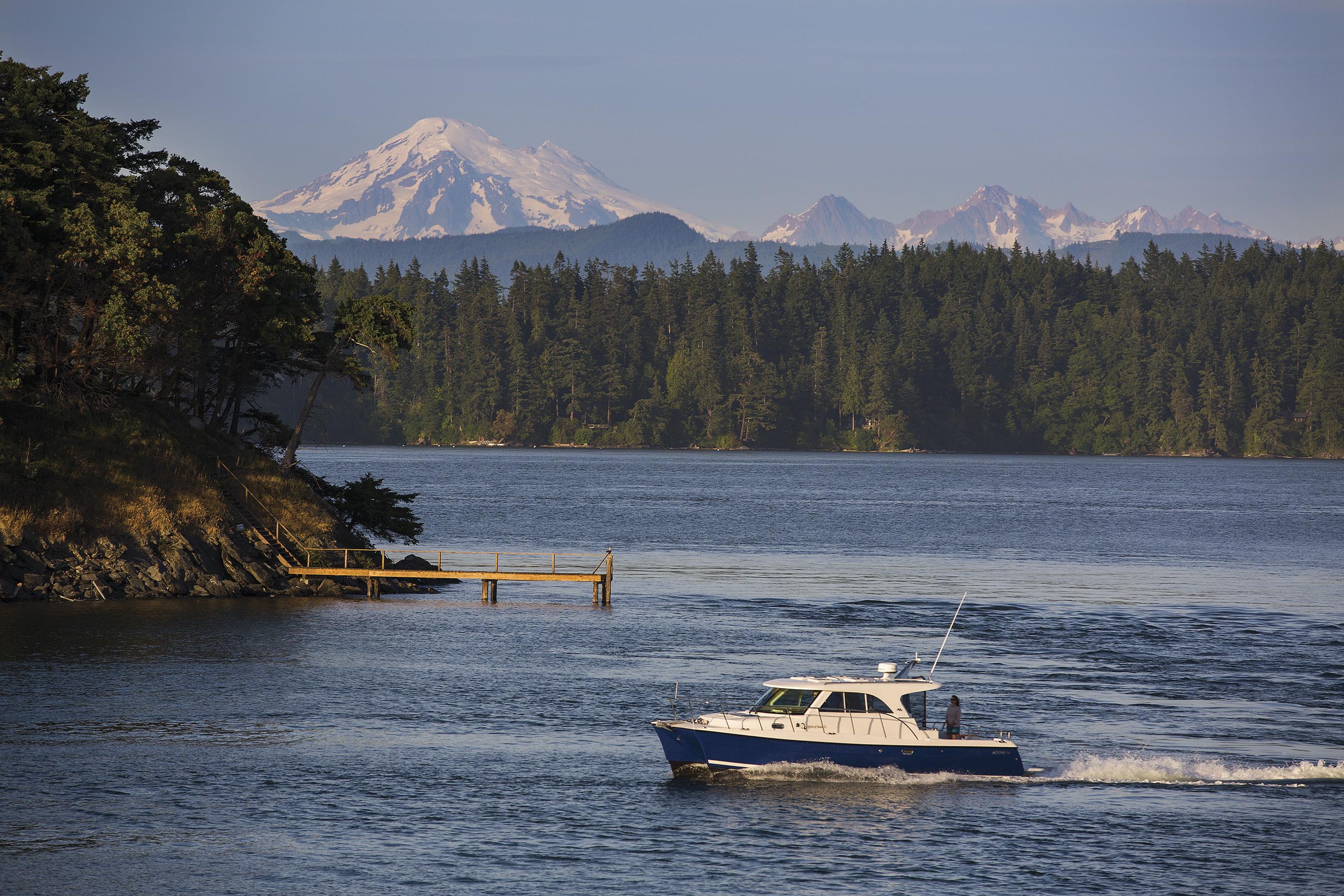




Cruises 18-20, Top Speed 24MPH
Cruises 18-20, Top Speed 24MPH
Cruises 18-20, Top Speed 24MPH
Single Diesel Inboard • E cient Performance
Single Diesel Inboard • E cient Performance
Single Diesel Inboard • E cient Performance

Sweet lines, versatility and sporty all-weather performance highlight this Finnish speedster

IIt was late February, and darn cold—well below freezing—when I stepped aboard the latest addition to XO Boats’ fleet, the DFNDR 9, at the West Vancouver Marina. My fingers were numb as I scribbled notes while SV Business Group (which also operates the marina) co-founder David Siradze walked me around the boat, showing me its many striking characteristics.
The XO line of Finnish deep-V aluminum sport yachts was founded in 2008 and is relatively new to Western Canada. XO Boats are versatile and designed for speed, performance and yearround operation, mostly as day boats or for short overnight cruises.


DESIGN AND CONSTRUCTION
The XO line offers eight models from 26 feet (8.03 metres) to 30 feet (9.4 metres) that can reach speeds up to 45 knots. The DFNDR 9 (28 feet, 10 inches/8.8 metres) reviewed here is a walkaround, with two Mercury 225-horsepower V6 outboards. Its sweet lines are characterized by an aft swept windshield and plumb bow with an attractive and tactical-looking vinyl hull wrap.
The hull is heavy gauge aluminum, while the deck and interior mold are fibreglass, with foam in between for buoyancy and added strength. It is notable that the decks and soles are so
well built that there is absolutely no flex—which is rare. They are coated in PlasDeck, which is a thick, flexible PVC material which provides excellent traction plus soft cushioning underfoot. The hardtop’s thick tubular support cage, interior handholds and bonded window frames are aluminum and very robust.
ON DECK The cockpit is compact, but versatile, with a forward-facing bench seat. When folded, it provides good walkaround access on the swim platform. Fronting the bench is a folding GRP table that is raised to serve as an outdoor dining table. The aft end of the helm/saloon area is enclosed by canvas, which can be moved out of the way to
allow the forward-facing bench seat backrest to flip forward so it faces the cockpit. When the table is raised and folded open, it creates a nice spot for six to enjoy drinks or food (on warmer days of course). In its lowered position, cushions can be added to convert the cockpit to a large sunpad. Deep, top-access lockers built into the bulwarks provide plen-



1. Most of the space below is taken up by the surprisingly roomy V-berth.
2. The helm/saloon area offers 6' 3" (190 centimetres) of headroom.


3. Fronting the cockpit bench is a folding table that is raised to serve as an outdoor dining table.

ty of storage for fenders and lines. The machinery access (filters, four AGM batteries, general storage and such) is accessed under the cockpit sole, though the latches were iced up during the sea trials so I couldn’t evaluate that space.
Perhaps the most innovative feature of the DEFNDR 9 are its substantial sliding glass doors on either side. They open the helm/saloon area completely to the elements and allow passenger access to the rear bench seat.
The 16-inch-wide side decks and the 34-inch-high bulwarks topped with thick, rock-solid aluminum handrails between the bow and stern areas make for safe passage regardless of conditions. The windlass and anchor gear are tucked below a triangular bow hatch. Boats with plumb bows always raise concerns about the anchor damaging or scraping the paint off the hull. XO has come up with a clever hinged bow roller (and anchor) that tucks away into the windlass compartment when not in use and flips up over the bow when needed.

While there is no dedicated seating at the bow, sitting on the rubber sole and leaning on the bulwarks should be comfortable, however, bow cushions can be optioned. A step-through hatch provides easy secondary access to the Vberth from the bow. The hatch is large enough to load gear such as bikes, kayaks and paddleboards into the V-berth area, though there is also ample room for gear and toys on the foredeck or the hardtop. Both the bow and cockpit areas have recessed bases for support poles and tie downs for optional sunshades.


INTERIOR The helm/saloon area offers 6' 3" (190 centimetres) of headroom and consists of two hydraulic suspension seats in front of the previously mentioned and well-padded bench seat.

This area is compact—the helmsperson must walk outside and around the wheelhouse to change positions with the co-pilot and the glass doors must be slid back to access the aft bench—but once everyone is in position, it’s a cosy space with room for everyone to travel in comfort. Under the bench seat on the test boat was a small drawer fridge. An off-the-shelf portable stove can be used for cooking. The helm arrangement is excellent with everything right at your fingertips. There’s room for two touch screens (the test boat only had one) and the steering wheel is adjustable, as are the suspension seats that can swing 180 degrees to face the bench seat, thus creating a larger inside social area. Most of the switches are flush, with push button controls. A powerful defrost system should keep the windshield from fogging up. The test boat was ordered with an Optimus 360 joystick, bow thruster and Lenco automatic trim tabs. Overhead an electric sunroof provides both light and ventilation on those warm summer days. Once tucked inside, the Webasto forced air heater kept us toasty, despite the freezing weather outside.
Main access to the sleeping area is to starboard via a locking hatch that lifts




out of the way and a lower sliding plexiglass door. Headroom is limited, but the cabin does not feel claustrophobic. Most of the space below is taken up by the surprisingly roomy V-berth. The aft end has a recessed pop-up step that lifts up at the push of a button to serve as a sturdy step to the bow area but also doubles as a small table. Good storage is provided by a shelf and side lockers across from the head. Air vents on either side of the cabin provide ventilation or can be closed off as required. The head compartment is again, quite compact, but it does the trick with an electric toilet, sink, faucet and shower wand. Everything inside and out is very well engineered with no rough edges—the finishing is flawless.
UNDERWAY David Siradze guided us out of the marina, past Eagle Island and its luxury homes, and into Howe Sound. Despite the cold, it was a fine, sunny day with a two-foot chop and outflow winds of about 15 knots—enough to give us a good idea of performance. XO Boats are designed to operate in the waters of Finland, Sweden and the Baltic Sea, which offer similar conditions to the West Coast, and are built accordingly to handle rough weather. As the company
literature says, “…head out when others stay in port.” Sounds like fun!

The twin 225-horsepower outboards offered plenty of power and fast acceleration, with us climbing onto the plane in a mere 3.5 seconds with almost no bow rise (whether using the auto trims or not). Visibility was excellent all around. We were soon zipping along at 24 knots (3,500 rpm) and bouncing over the chop with none of that irritating slamming or pounding, thanks to the fine entry and deep-V hull. At this speed, the noise level in the helm area was whisper quiet at 65 dB. Our fuel burn was only 14 gallons per hour (53 litres per hour). When we advanced the throttles to their stops, the acceleration was enough to force us back into our seats. At full throttle, we were zipping along at an almost scary 43 knots (5,000 rpm) and the ride got
bumpy, but thanks in part to the suspension seats, we weren’t getting thrown around and felt quite secure—whether standing with the bolster or fully seated (the aluminum footrests are very well placed). The centreline throttles are protected by an adjacent arch that can be used to brace the driver’s hand when using the throttles while also preventing someone from accidentally stumbling and hitting the throttles. Back at 24 knots, with the wheel at various positions, including hard over, the XO clung to the water, heeling steeply with no skipping or ventilation of the props. The turning radius was as tight as I’ve seen and the steering was nicely responsive. There was absolutely no squeaking from anywhere inside—again something rare—thanks once again to engineering and build quality.
LOA (not including engines) 8.8 m / 28' 10"
Beam 2.6 m / 8' 6"
Draft to props 0.99 m / 3' 3"
Weight (not including engines) 2,710 kg / 5,975 lbs
Fuel 450 L / 119 USG
Water 98 L / 26 USG
Holding 45 L / 12 USG
Std Power: 2 x 225 hp Mercury
CONCLUDING REMARKS I tried to find fault with the XO, but I’m happy to say I couldn’t find anything to criticize— and that is very unusual for this reviewer. The DFNDR 9 is one tough aluminum boat and solid as a rock (but it floats a heck of a lot better). Versatility is another bonus, with several cockpit and cabin seating arrangements to choose from. For those hot summer days, with the doors, skylight and aft canvas removed, it becomes an open boat. The XO is also a speedy sports boat. At top speed, one could easily get from West Vancouver to the Gulf Islands (36 miles) in an hour. At 24 knots, it would take a little better than an hour and a half (while burning only about 21 gallons/80 litres total). I’m confident that the XO DFNDR 9 can also take any weather that can be thrown at it.
Although not designed for long cruises, the accommodation would work well for a couple or a couple and a child. The roof rack and bow and cabin storage means there’s room for all the toys and/or adventure equipment. Price, as tested was $350,000 at press time. The XO DFNDR 9 is earning an expanding niche in the sport class on the West Coast
perhaps best of all, it’s a ton of


































Greg Andrew, CPYB
Yacht Broker & New Sales gandrew@vanislemarina.com




Adam Pedersen
Yacht Broker & New Sales apedersen@vanislemarina.com









Nynke Plouffe
Yacht Sales Coordinator nplouffe@vanislemarina.com




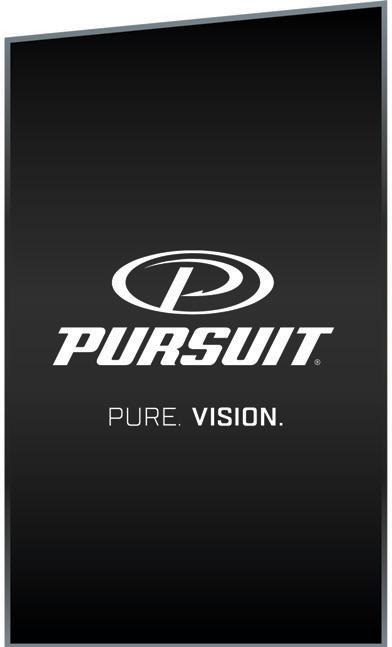

Sidney, BC | 250 656 1138
vanislemarina.com




















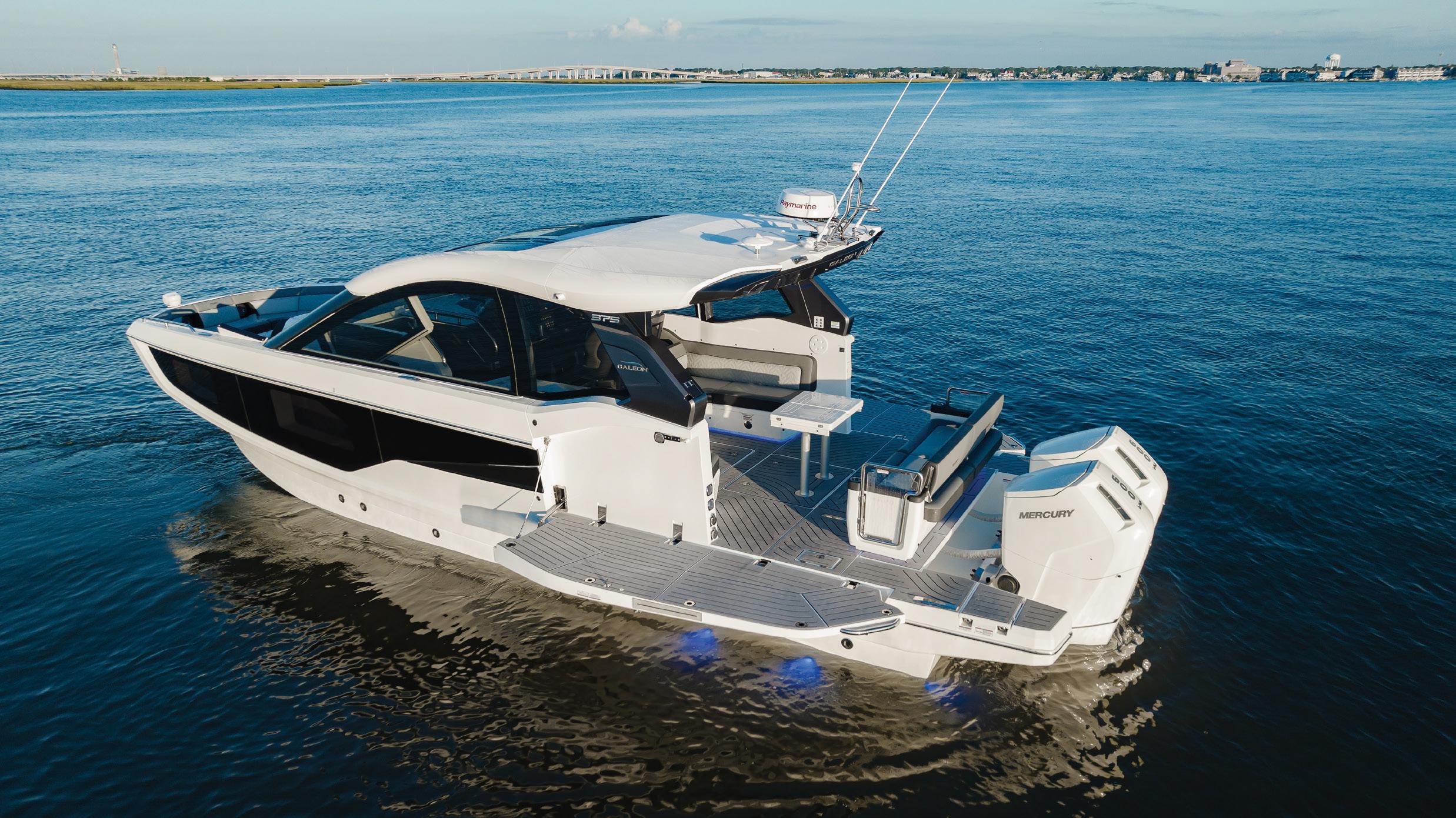










A new direction in the evolution of the Y class exterior design language, focussing on the development of refined, sophisticated surfaces in every area to generate a uniquely clean overall aesthetic. The new Y72 design features are comparable to those of larger Y yachts.

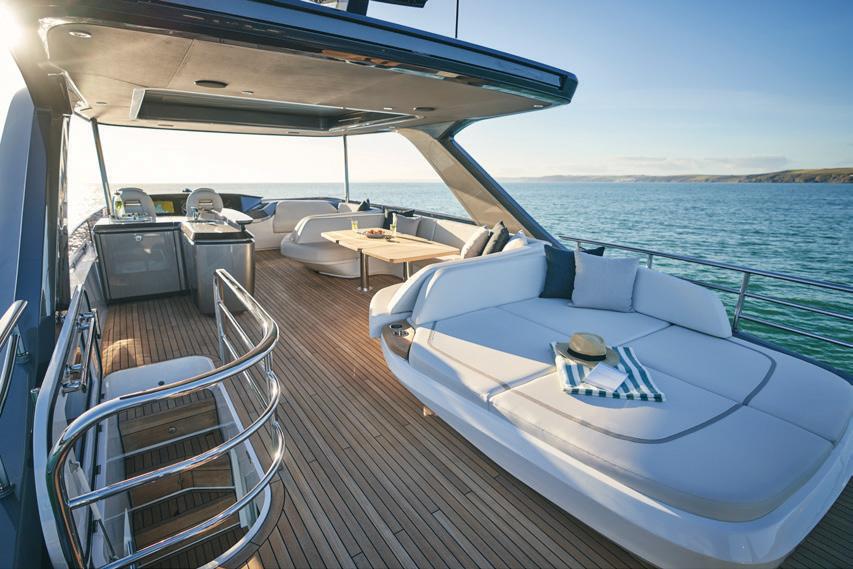



 Princess Y72
Princess Range
Princess Y72
Princess Range

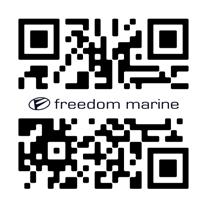












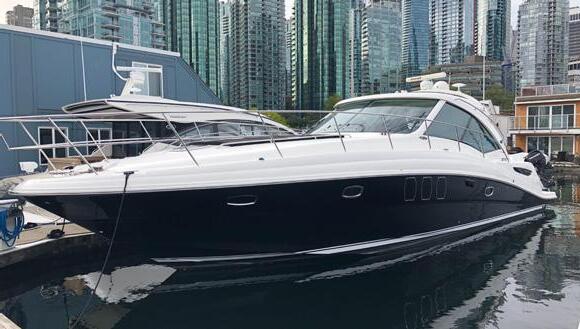








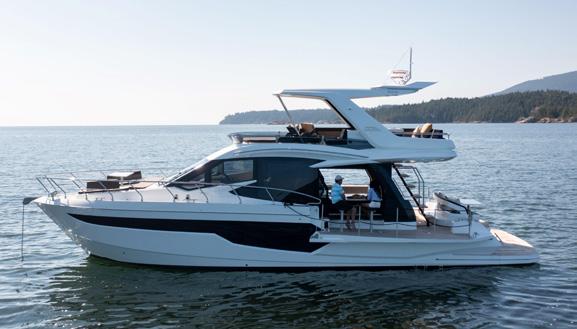















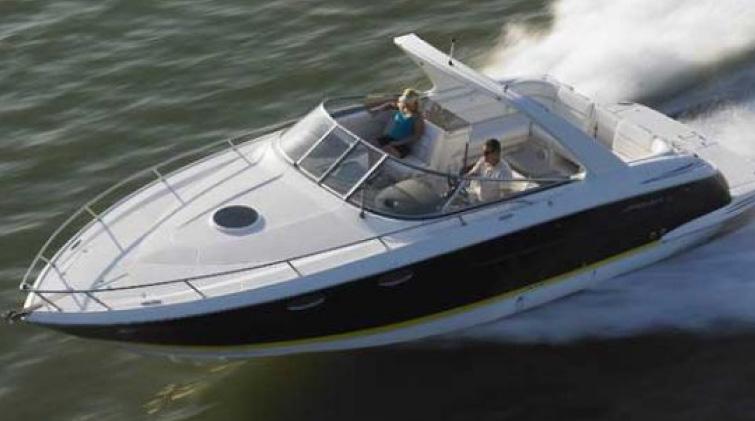





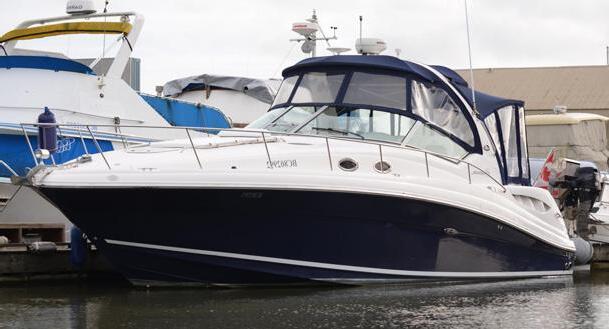






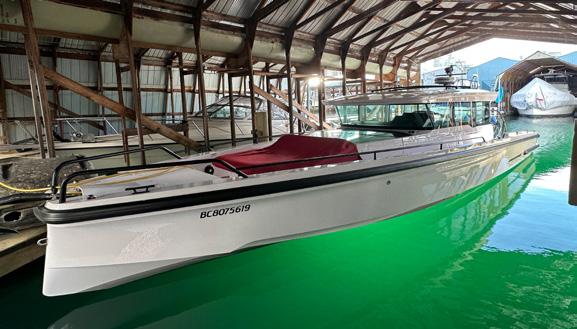






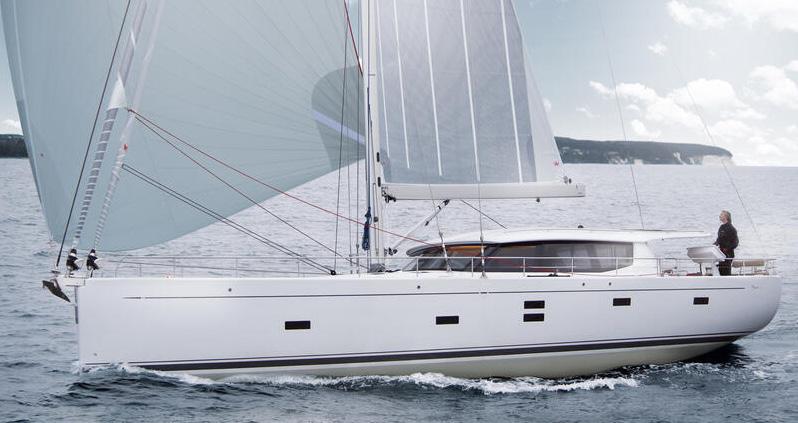





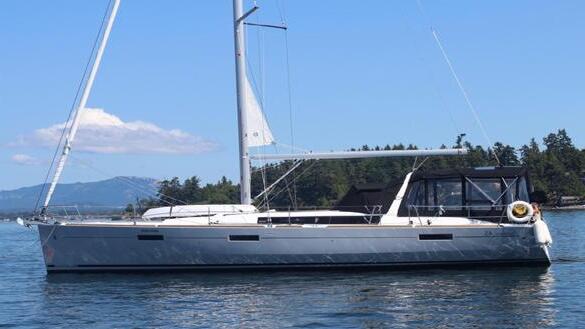
























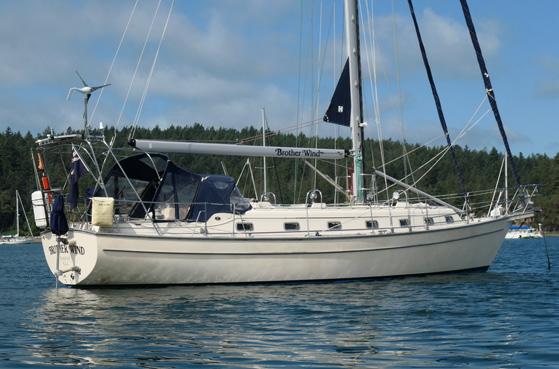
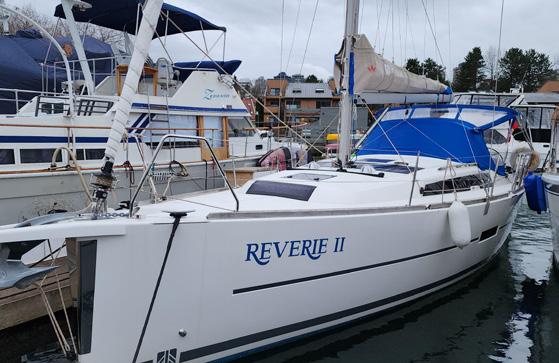


 DUFOUR 360 ON DISPLAY AT OUR SIDNEY SALES DOCKS
BAVARIA R40 FLY TWO STOCK BOATS ARRIVING - JUNE AND JULY 2023
DUFOUR 360 ON DISPLAY AT OUR SIDNEY SALES DOCKS
BAVARIA R40 FLY TWO STOCK BOATS ARRIVING - JUNE AND JULY 2023














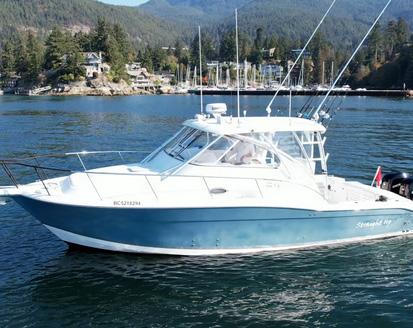
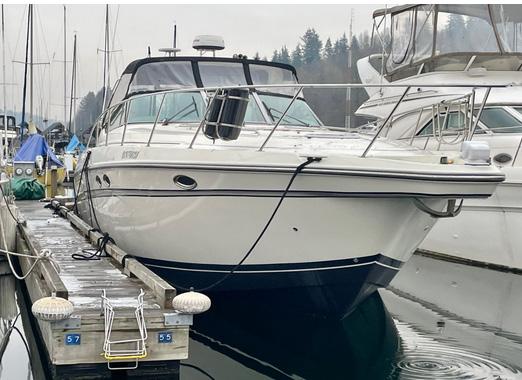









Since






































































BY
BY APPOINTMENT

MARITIMO S62 2015 - Fully equipped, lithium ion batteries, low hours, Volvo shaft driven, 17” Garmin screens and much more.
$1,988,000 CAD
BAYLINER 5788, 2001 PILOT HOUSE - A full bridge enclosure, hurricane heating system, newer electronics and a Presto dinghy davit on the swim grid. $689,000 CAD



REGAL 4600
SPORTS COUPE 2013 - Fully glass enclosed with large sunroof for maximum versatility of environment. Spacious salon, and highly upgraded systems.
CAD
JEANNEAU VELASCO 37F, 2017 - Only 186 hours on the twin D4 300hp Volvo diesel motors. Loaded with options.
CAD
CARVER 466 MOTOR YACHT, 2004 - Tastefully upgraded, boathouse kept, and just 886 hours on her Volvo 480hp diesels. $325,000 USD

CORBIN 39 1983 - Solid Off-Shore / West Coast design; Factory finished with many upgrades; Fully equipped for extended cruising. SOLD
REGAL 3880 COMMODORE SEDAN BRIDGE 2004Twin Yanmars, gen, new dinghy on davits, great family cruiser!









$259,000 CAD
CAD
GARTSIDE 37 PILOTHOUSE 2020 - An exquisitely detailed west coast pilothouse, launched in 2020. Finest of materials used throughout inc. double planked red cedar/ epoxy hull. RAIN BEAR is a true gem that must be seen!
CAD
36’, 2001 - 2020 installed cockpit enclosure, new (2019) Genoa solar panels, new (May 2020) batteries. $119,900 CAD
CUTWATER 28, 2013 - A well optioned example with features including bow and stern thruster, Volvo D4, 12inch chart plotter, aft steering station. Only 425hrs!


$179,000 CAD
LIQUID METAL MARINE QUATSINO 24’ 2021- Beautiful custom aluminum DC bowrider designed by Greg Marshal, launched in 2022. Volvo D4-270,16” Simrad Nevo multi-function, removable hardtop, Shockwave seats, enclosed head. $299,000 CAD
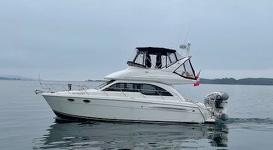
BOSTON WHALER OUTRAGE 22, 1988 - Classic Whaler with 2018 Suzuki F150, and 2018 9.9 Suzuki kicker! Touch screen lowrance plotter/fish finder, power windlass and only 143hrs. $54,000 CAD
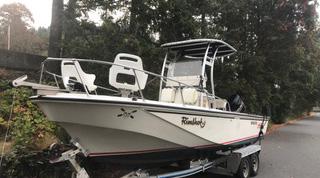
AIRSOLID 27’ RIB 2006 - Commercially certified and registered for 12 passengers; full refit in 2022, new tubes 2021, 2022 Garmin 9” plotters; 2020 Evinrude E-TEC motors, warranty until 2027; tandem axle trailer. $ 120,000 CAD
CUSTOM
PAUL GARTSIDE DESIGN 1986 - Fabulous pocket cruiser built at highly renowned Jespersen yard; elegant, simple & extremely sea worthy. $49,900 CAD




Beautifully finished interior, Massive upper Deck, Expansive covered Cockpit, Three station helm control, Twin Volvo Diesel, Northern Lights Genset, Watermaker, Large swim grid with Seawise Davit system, Sat Dome, Raymarine Hybrid Touch, Hurricane Hydronic Heat

This Well Equipped Yacht has ample room to Live and Entertain Autopilot, Bow Thruster, A/C Heat, 20 KW Genset, Cameras... Too many features to list!















































































































































SIDNEY ISLAND’S MOST AFFORDABLE PROPERTY



AWESOME SIDNEY ISLAND OCEANFRONT
Very special 2.42 acres, 291 ft east facing oceanfront, incredible sunrises, sunsets bathe the view in splendid light. Beautifully treed with fir, cedar and arbutus, shared well excellent building sites. Communal dock and breakwater, airstrip, swimming pond, miles of roads trails, beaches and island caretaker. $528,000
LARGE, NEWLY RENOVATED FAMILY HOME WITH SHOP - HAGENSBORG, BELLA COOLA

Large, newly renovated 3 bedroom, 2 bath rancher on 2 acres in an excellent location with panoramic mountain views, good sun exposure an no flood risk. Easy highway access, close to shopping, schools, river fishing, hiking trails and the government wharf. $589,000
RICHARD OSBORNE
Personal Real Estate Corporation
604-328-0848 rich@landquest.com
EXECUTIVE LAKEFRONT HOME AND ACREAGE - PUNTZI LAKE
Stunning, custom built, timber frame, 2 storey home on Puntzi Lake just 2 hours west of Williams Lake. This 6.2 acre property is also complete with a heated carport, 350 ft of waterfront, income potential and has easy access by floatplane right to the front yard, or by the 6,000 ft paved airstrip just 10 minutes away. $1,400,000

FAWN GUNDERSON
Personal Real Estate Corporation
250-982-2314 fawn@landquest.com
CUSTOM TIMBER FRAME HOME ON 12 ACRES DE COURCY ISLAND
12+ acres on De Courcy Island with subdivision potential. Custom built 1,800 sq. ft. timber frame home completed in 2017. 3 bedrooms, 2 bathrooms plus loft. Partial ocean view. De Courcy Island has an excellent marina and community hall adding to the overall attraction of the island. $768,000
JASON ZROBACK 1-604-414-5577 jason@landquest.com
JAMIE ZROBACK 1-604-483-1605 jamie@landquest.com
RICHARD OSBORNE
Personal Real Estate Corporation
604-328-0848 rich@landquest.com
LAKE COWICHAN WATERFRONT YOUBOU, BC
Pristine south-facing waterfront home on Lake Cowichan with 90+ ft of gentle sloping beach frontage. 2,100 sq. ft. home with large windows throughout offering views from every room of the house, a 10 x 20 ft landing followed by a 54 ft aluminum ramp leading to a new 10 x 24 ft private dock. Sit around the fire pit on the pebbled beach and enjoy the peaceful tranquility of the lake. $2,250,000

KEVIN KITTMER 250-951-8631 kevin@landquest.com

BLUEBERRY POINT BLIND BAY - NELSON ISLAND
Over 800 ft of oceanfront in Blind Bay on Nelson Island. This location perhaps has one of the best views out over Blind Bay and Malaspina Straight. Protected deep water moorage, quality freshwater source, main cottage, guest cabin and more. $895,000

JASON ZROBACK 1-604-414-5577 jason@landquest.com
JAMIE ZROBACK 1-604-483-1605 jamie@landquest.com
FAWN GUNDERSON
Personal Real Estate Corporation


250-982-2314 fawn@landquest.com
SKEENA RIVER RANCH TERRACE, BC
This world-class ultra luxurious 6,475 sq. ft. 6-bedroom, timber-frame lodge on a 305 acre ranch skirting the banks of the mighty Skeena River is a masterpiece in detail, design and décor. Ranch operators live in a separate caretaker log house on the grounds, so owners can enjoy the unprecedented tranquility this outdoor paradise offers. $14,995,000

SAM HODSON Personal Real Estate Corporation 604-809-2616 sam@landquest.com
BASE CAMP DESOLATION SOUND STRATA LOT 1 WILDERNESS
5 acre wilderness lot located at the gateway to Desolation Sound, minutes to Lund on the Sunshine Coast. Road accessible with power available. No building permit process required. Limited availability with only 9 lots being released with introductory pricing from $349,000. NOW $369,000

JASON ZROBACK 1-604-414-5577 jason@landquest.com
JAMIE ZROBACK 1-604-483-1605 jamie@landquest.com
MULTI-FAMILY DEVELOPMENT SITE WITH MARINA - SICAMOUS, BC
High Density Lakefront Development site. Upland parcel is 2.55 acres & zoned for a Multi-Unit structure. Original plans & permits were taken out for 67 condo units each with a marina slip. 62,000 sq. ft. concrete underground parking garage with 162 stalls. Foreshore area / marina is on the Sicamous Narrows, a busy and popular boating route accessing the Shuswap Lake system. $3,999,000

6 ACRES OF SKEENA RIVERFRONT BARE LAND - HAYSPORT, BC

OCEANFRONT DREAM OSLAND - SMITH ISLAND
Where the Pacific Ocean and Skeena River meet, this waterfront off-grid home overlooks the everchanging ocean and river waters. This 1.07 acre property enjoys 260 feet of oceanfront and 225 feet of riverfront. $549,000
ARMSTRONG

740 SEA D RIVE , CE N TRAL SAA N ICH , BC V8 M 1B 1
B O ATER S and L ov ers o f t h e S ea y ou w i l l de l ig h t in t h is O CEANF R ONT r et r eat designed wit h w all s of gl a s s on th r ee l e v e ls t o p r o vide SPEC TA CULAR Top of t he World VIEW S , scarlet SUNSETS and a n e v e r - c han g in g Vis t a of w i l d l i f e and SA IL S ! Co m e t o t h e w est side whe r e w ar m Bea c he s , But c ha r t G a r dens Fi r e w or k s , c r a b , and p r awn shin g a r e natu r e ’ s g ift - T he r en o wned B r ent w ood B a y L od g e , Blue ’ s B a y ou r es t au r ant , co n v enient Mi l l B a y F er r y & m u c h m o r e combine with 3,750 SF of CUS TO M -
in g Vis t a of w i l d l i f e and SA IL S ! Co m e t o t h e w est side whe r e w ar m Bea c he s , But c ha r t
G a r dens Fi r e w or k s c r a b and p r awn shin g a r e natu r e ’ s g ift - T he r en o wned B r ent w ood B a y L od g e
y ou w i l l de l ig h t in t h is O CEANF R ONT r et r eat , designed wit h w all s of gl a s s on th r ee l e v e ls t o p r o vide SPEC TA CULAR Top of t he World VIEW S , scarlet SUNSETS and a n e v e r - c han g in g Vis t a of w i l d l i f e and SA IL S ! Co m e t o t h e w est side whe r e w ar m Bea c he s But c ha r t G a r dens Fi r e w or k s , c r a b , and p r awn shin g a r e natu r e ’ s g ift - T he r en o wned B r ent w ood B a y L od g e , Blue ’ s B a y ou r es t au r ant , co n v enient Mi l l B a y F er r y & m u c h m o r e combine with 3,750 SF of CUS TO M -


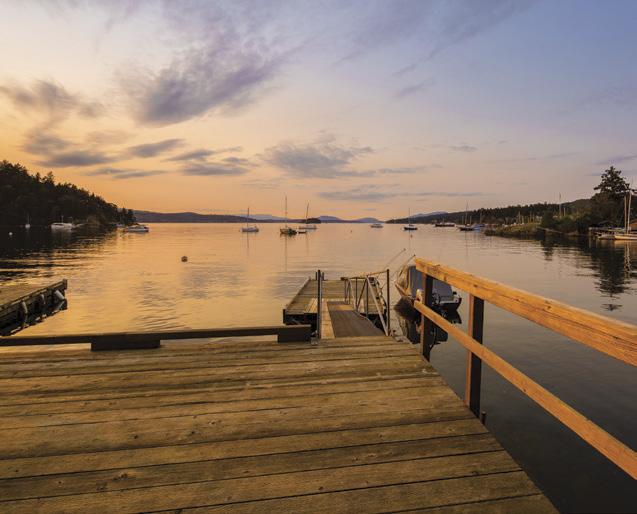
B UI LT Livin g NEW LE G A L M OD ERN 1- B ED R OO M sui t e wit h b ountiful Ocean Vi e w s c r af t ed wit h al l ameni t ie s in m ind , t o g ua r an t ee y our friend s and f a m ily will deli g ht in vi s itin g . An abundanc e of accom m odation in c l uding a n e w r oo f, natu r al gas run t o the p r ope r t y, and 105 ft of O cea n f r on t a g e ov er l ookin g B RENT W OO D B AY, PLU S a pri v a t e DEEP- WATER DOCK WITH Gene r al F o r e s ho r e Licence is a r a r e G e m indeed! I m a g ine t y in g up a Boat f r o m y our v e r y o wn do c k , comp l e t e wit h f r es h w a t er and p o w e r Boo k soon f or S E A d r ea m s co m e true! L IS T
Blue ’ s B a y ou r es t au r ant , co n v enient Mi l l B a y F er r y & m u c h m o r e combine with 3,750 SF of CUS TO MB UI LT Livin g NEW LE G A L M OD ERN 1- B ED R OO M sui t e wit h b ountiful Ocean Vi e w s , c r af t ed wit h al l ameni t ie s in m ind , t o g ua r an t ee y our friend s and f a m ily will deli g ht in vi s itin g An abundanc e of accom m odation in c l uding a n e w r oo f, natu r al gas run t o the p r ope r t y, and 105 ft of O cea n f r on t a g e ov er l ookin g B RENT W OO D B AY PLU S a pri v a t e DEEP- WATER DOCK WITH Gene r al F o r e s ho r e Licence is a r a r e G e m indeed! I m a g ine t y in g up a Boat f r o m y our v e r y o wn do c k , comp l e t e wit h f r es h w a t er and p o w e r Boo k soon f or S E A d r ea m s co m e true! L IS T ED AT $ 3, 450 , 000 ML S ® 91330 3 $3,395,000
B UI LT Livin g NEW LE G A L M OD ERN 1- B ED R OO M sui t e wit h b ountiful Ocean Vi e w s , c r af t ed wit h al l ameni t ie s in m ind , t o g ua r an t ee y our friend s and f a m ily will deli g ht in vi s itin g An abundanc e of accom m odation in c l uding a n e w r oo f, natu r al gas run t o the p r ope r t y, and 105 ft of O cea n on t a g e ov er l ookin g B RENT W OO D B AY, PLU S a pri v a t e DEEP- WATER DOCK WITH Gene r al F o r e s ho r e Licence is a r a r e G e m indeed! I m a g ine t y in g up a Boat f r o m y our v e r y o wn do c k , comp l e t e wit h f r es h w a t er and p o w e r Boo k soon f or S
6489
ca

m s co m e true! L IS T ED AT $ 3, 450 , 000 ML S ® 91330 3








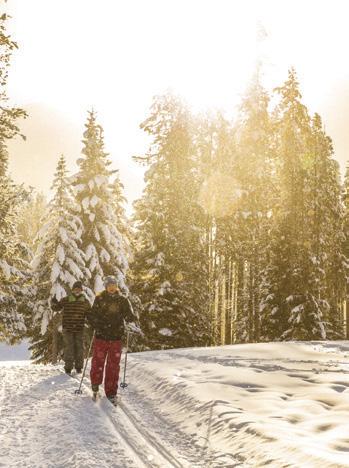








A boaters paradise with 180 ft. of low bank sand and shell beach fronting Walter Bay, Ganges Harbour. 50 ft. of moorage on a sheltered, shared dock with power and water. The house is about 2400 ft. on 2 floors with 900 ft Part finished basement with workshop. 3 bed & 3 baths on the 2nd floor. 1/2 bth. Living, dinning, kitchen & family room on main floor create a elegant family home that flows easily. Lot size 2.3 acres with year round stream. Address 268 Beddis Rd. Google Earth has quite a good updated view. $2.6m

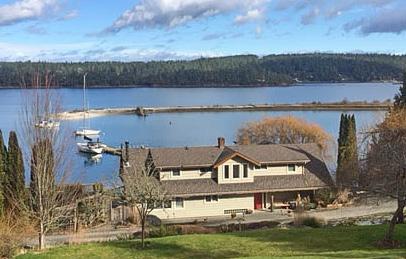
Contact: mannerbob268@gmail.com









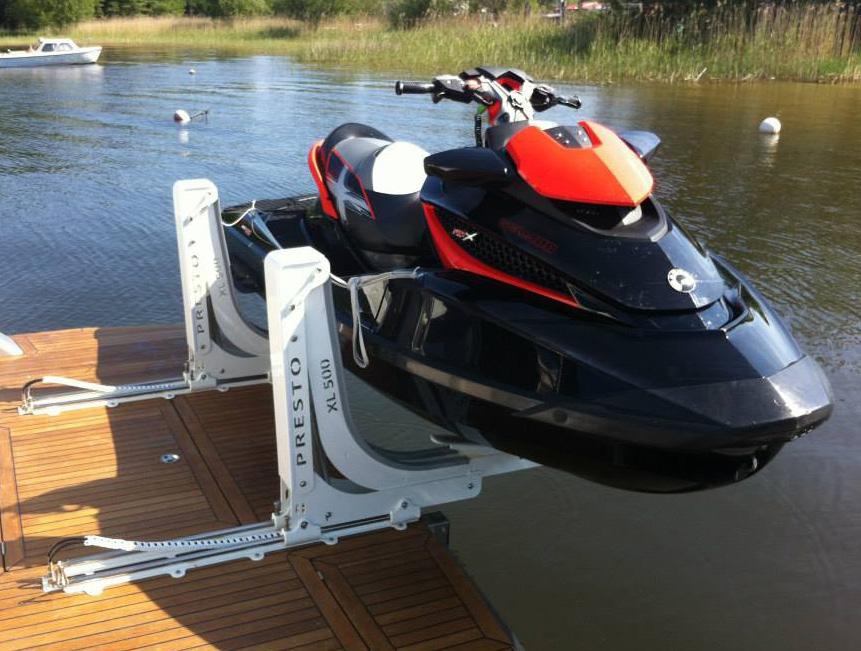











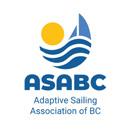








ASKING $179,000

Fully equipped 1999 4082 Bayliner , Aft cabin with private head/shower, 2nd head and cabin in bow with lower berth, sleeps 6 comfortably, Twin 270 Cummins with rebuilt turbos. New Ray marine 3 D Axiom and Garmin Backup with Radar, AIS, Stereo, cell booster , 2 flat screen TVs, Glass window and wiper at upper helm, New Bow & Stern thrusters, New Lemar windless, 10’Bulldog tender on davits. To many more options to list. Vessel is very well maintained Bow to Stern. Will consider trade for 30’ Commander. Call Dave 250-615-7225



2005 Tournament Express Flush Deck version 315hp Yanmar diesel. Comes with nine-foot alum RIB with new 6hp Yamaha – all on a SeaWise tilt-up davit system. New electronics plus Lifeline AGM batteries. Bowthruster. Pilothouse canvas enclosure. Navy-blue hull. $149K, Call Bill 250-537-2251 or cell 604-880-3551
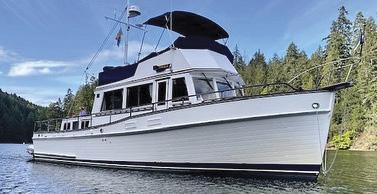




















plotted our course from Granville Island to Comox to pick up guests and set off for Prideaux Haven and our first attempt at anchoring solo. With some friendly advice and assistance from nearby experienced boaters, this voyage too ended uneventfully.
Our final trip of the year was to be a Desolation Sound Christmas. The state of the vessel had been steadily deteriorating as the business through whom we had originally leased had been sold. We arrived at the marina to find our vessel cold and dirty—with a clogged head, metal filings in the oil, and a myriad of other issues. My wife called up to the office to complain and they sent down their newly graduated fleet manager. Apparently, “Safety 101” is no longer taught in trade school as he strung the extension cord across the stairs for the wet/dry vacuum to suck out the head. He exited the head to make his way up the stairs with the black water laden vac and tripped on the extension cord. My wife witnessed the whole event. The black water landed on the leather couch and floor, narrowly missing my wife. Some of the detritus landed on our bags.
After two hours of bickering with the owner of the company we received our refund for the portion of the lease we were unable to use due to the state of the vessel. No more rentals for us, now we look forward to retirement and owning our own very clean and wellmaintained vessel.
Have a funny or interesting story? Cockpit Confession is a readersubmitted column and we are always looking for another good yarn. Send your 600-word story to editor@pacificyachting.com. We’ll send you a T-shirt!





My Father was a sailor in the merchant marines during the Second World War. His yarns became my bedtime stories. Every night, a wide-eyed young lad would listen to the seafaring tales of adventure. It is therefore without wonder that the saltwater which courses through all our veins—though only afflicts a few of us with an obsession of the sea—manifested in me. This disease called “boating” can lay dormant for decades only to show itself later in life, robbing those afflicted of all reason—
 BY BRIAN SCOTT WILKINSON
BY BRIAN SCOTT WILKINSON
Mand money—in their drive to get onto the water.
I blame my wife for exposing me to the catalyst that would reawaken this disease, for it was she who suggested our first trip together to the West Coast. Shortly after this first road trip, I noticed the symptoms of being “sea stricken” while in a small-town grocery store in central Alberta. It was here I discovered Pacific Yachting and my fate was sealed. When we got engaged, my wife told me, “You arrange the honeymoon…” Charter companies, crewed charters, captains for hire—I looked into every option that would allow me to get on the water for the first time. Following our Desolation Sound honeymoon, and after much research, my wife and I did our competent crew and day skipper courses. We entered a leasing program which allowed us 32
days aboard a Meridian 368. We got her eight days a quarter. Our first eight days on board were spent with an instructor where we learned the boat, her systems, routine maintenance as well as handling and navigating all while plying the waters of the Southern Gulf Islands at the end of March.
On our first solo trip, we booked in at a few marinas with short jaunts in between to get our feet wet. Other than the debatable “small” miscalculation of returning to Granville Island on Canada Day and having to wind through numerous flotillas of small sailboats, kayakers and “SUP-ers,” only to have to hold station and await our turn at the fuel dock, the trip was a success.
For our third quarter adventure we
Continued on page 105



